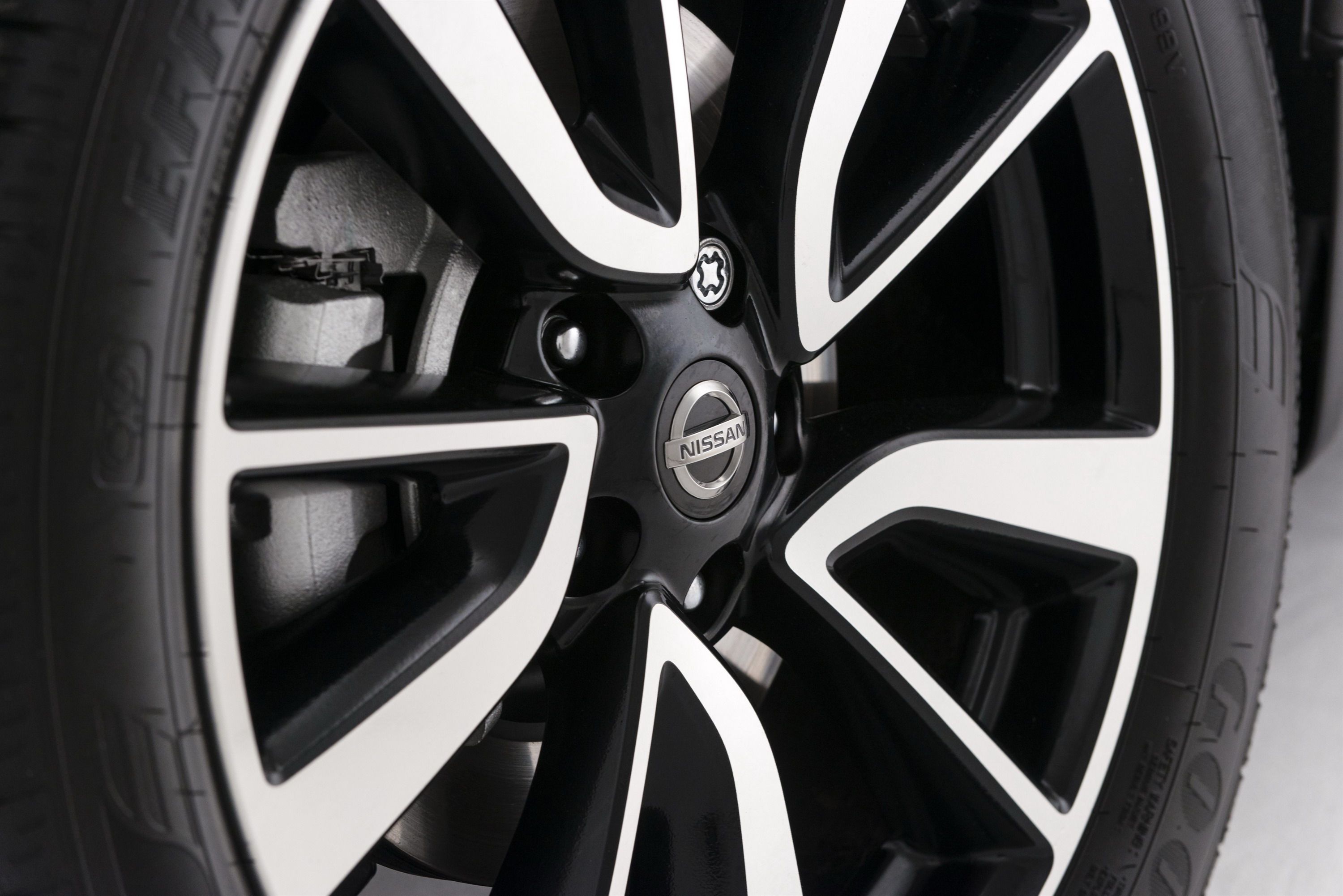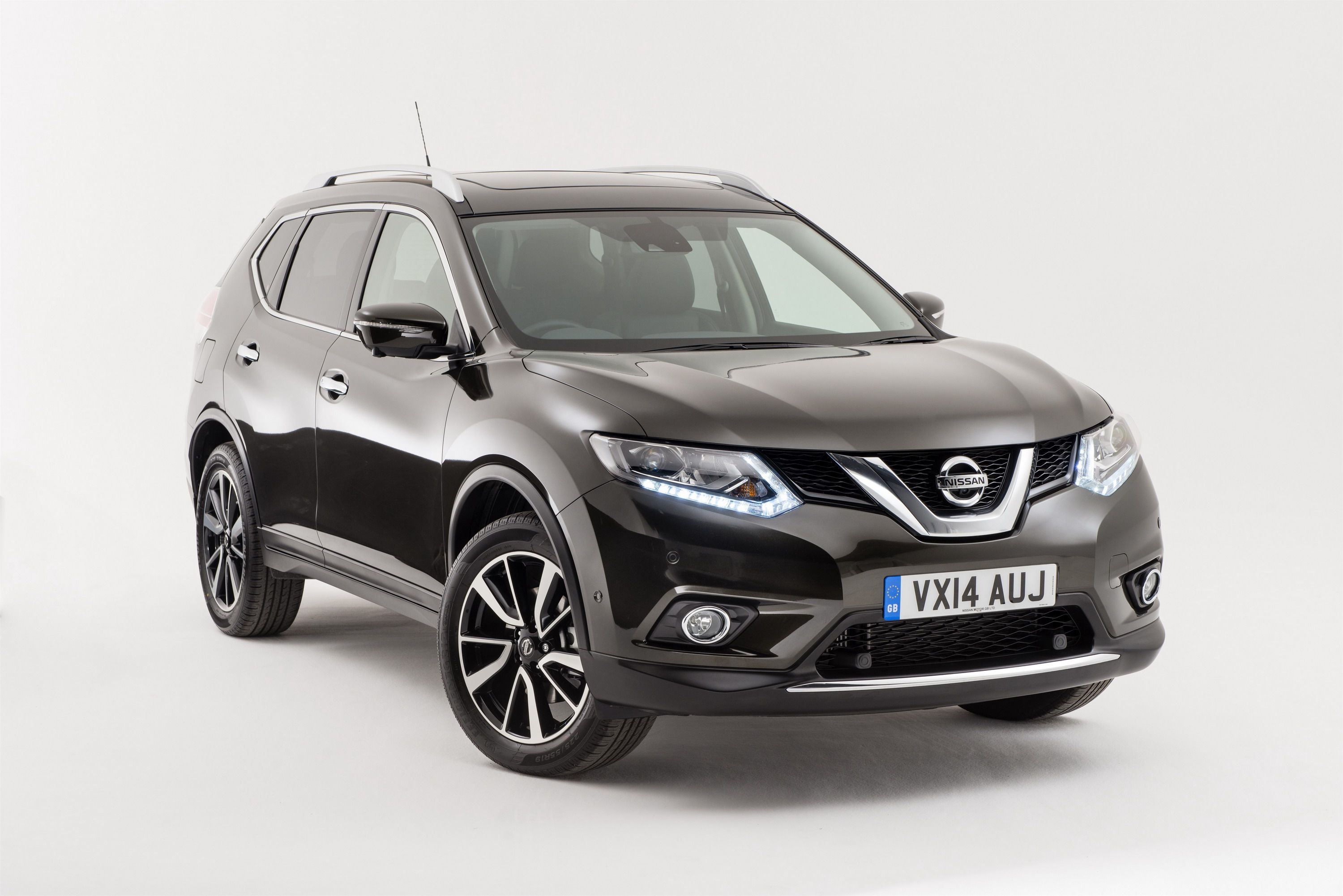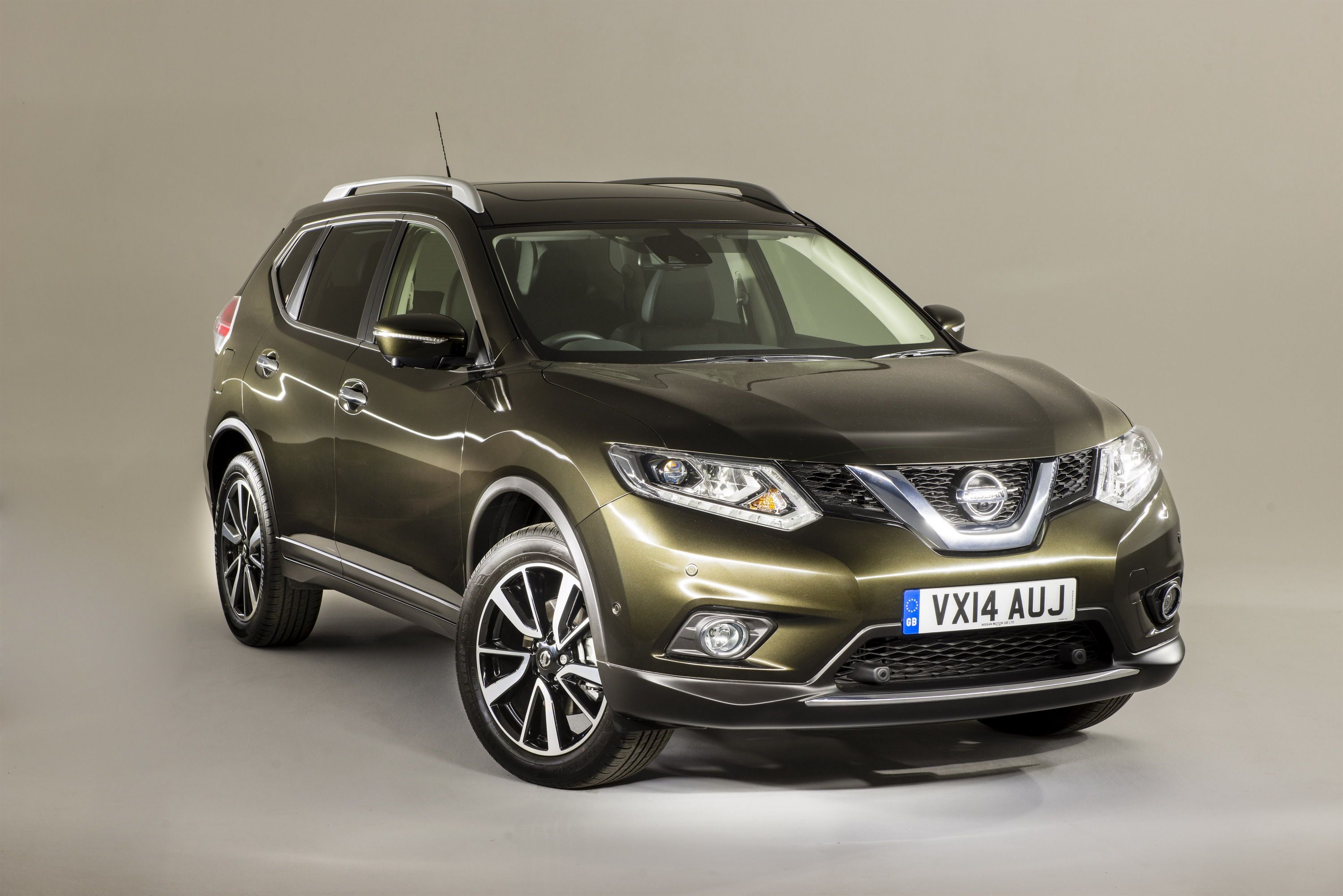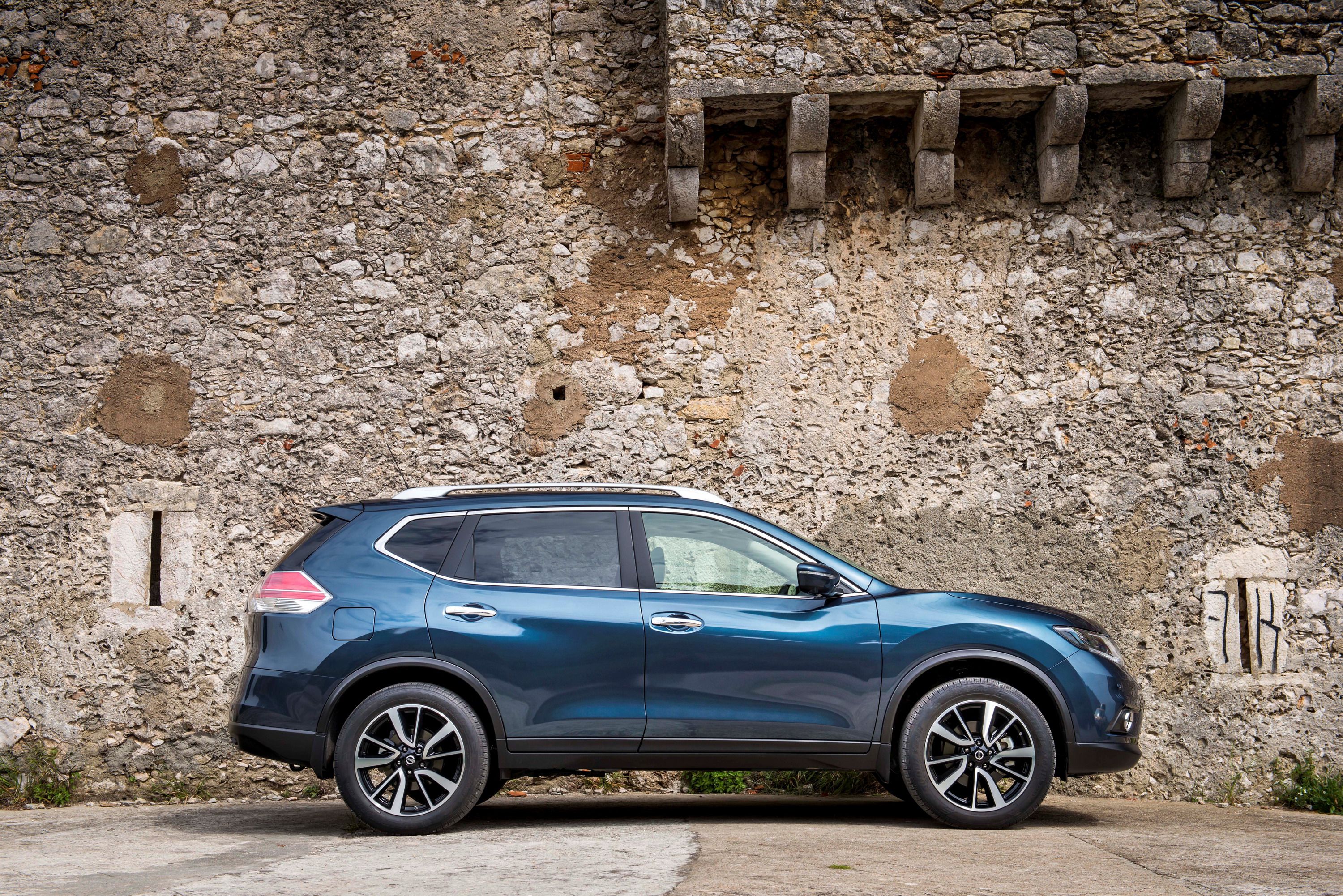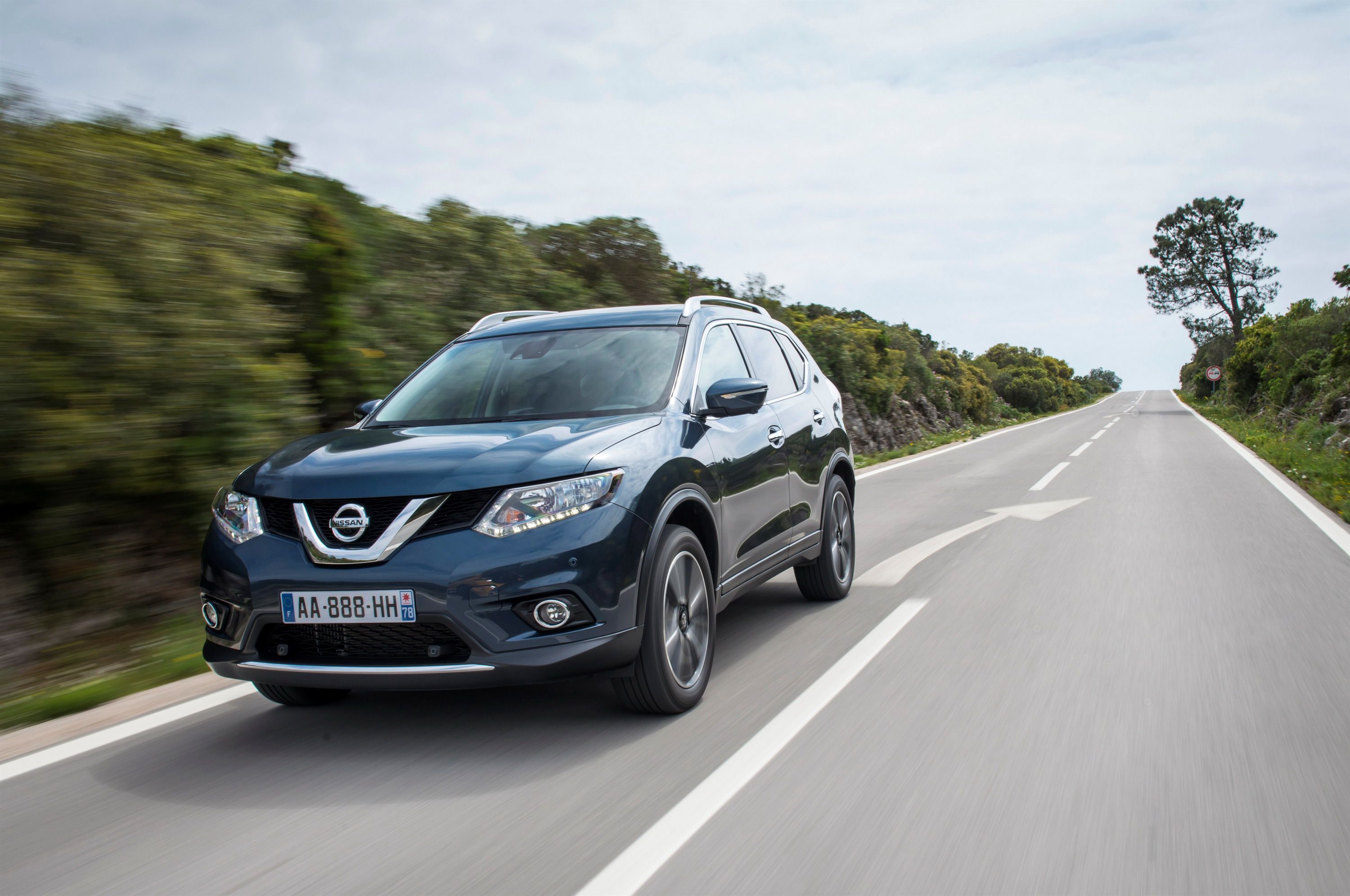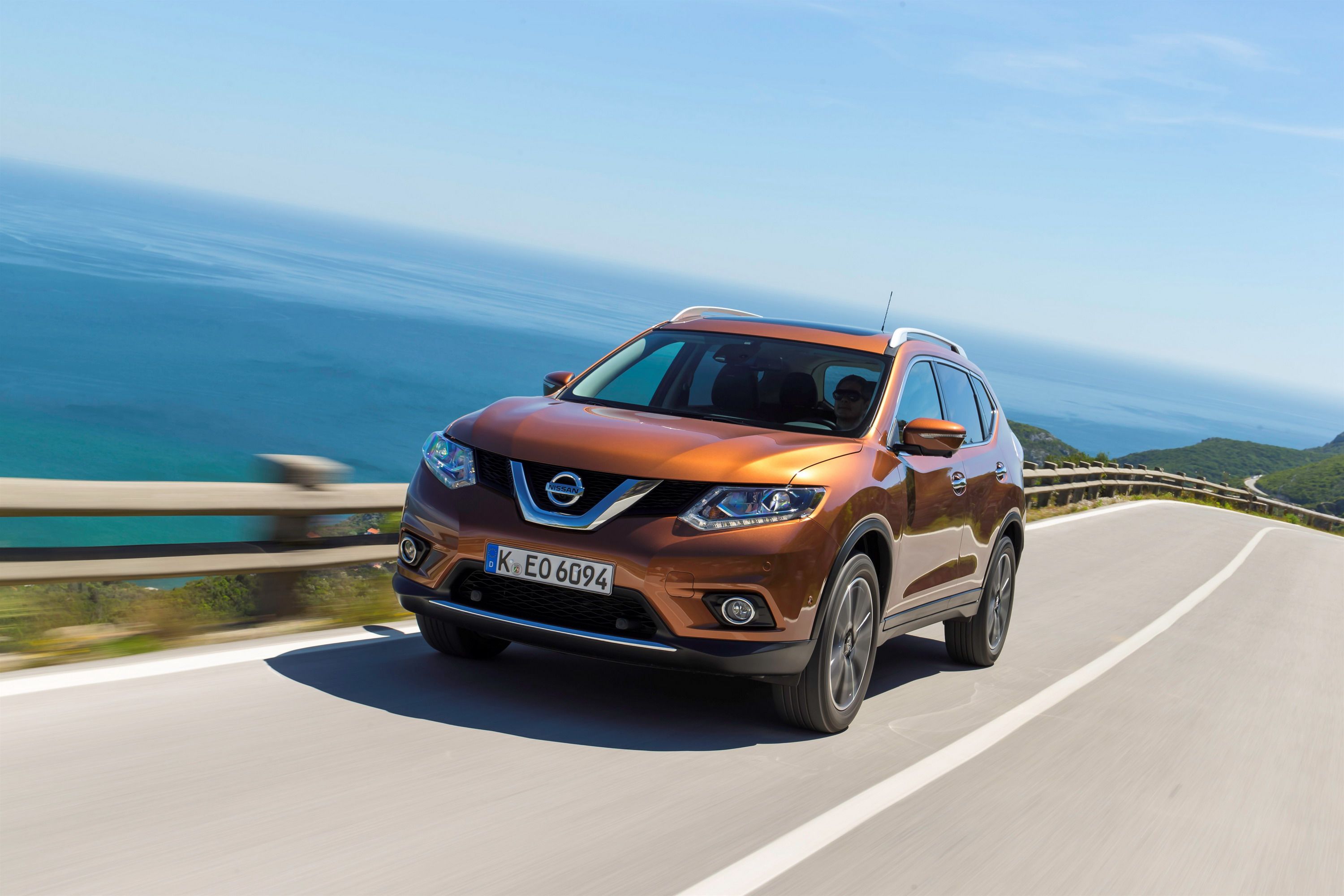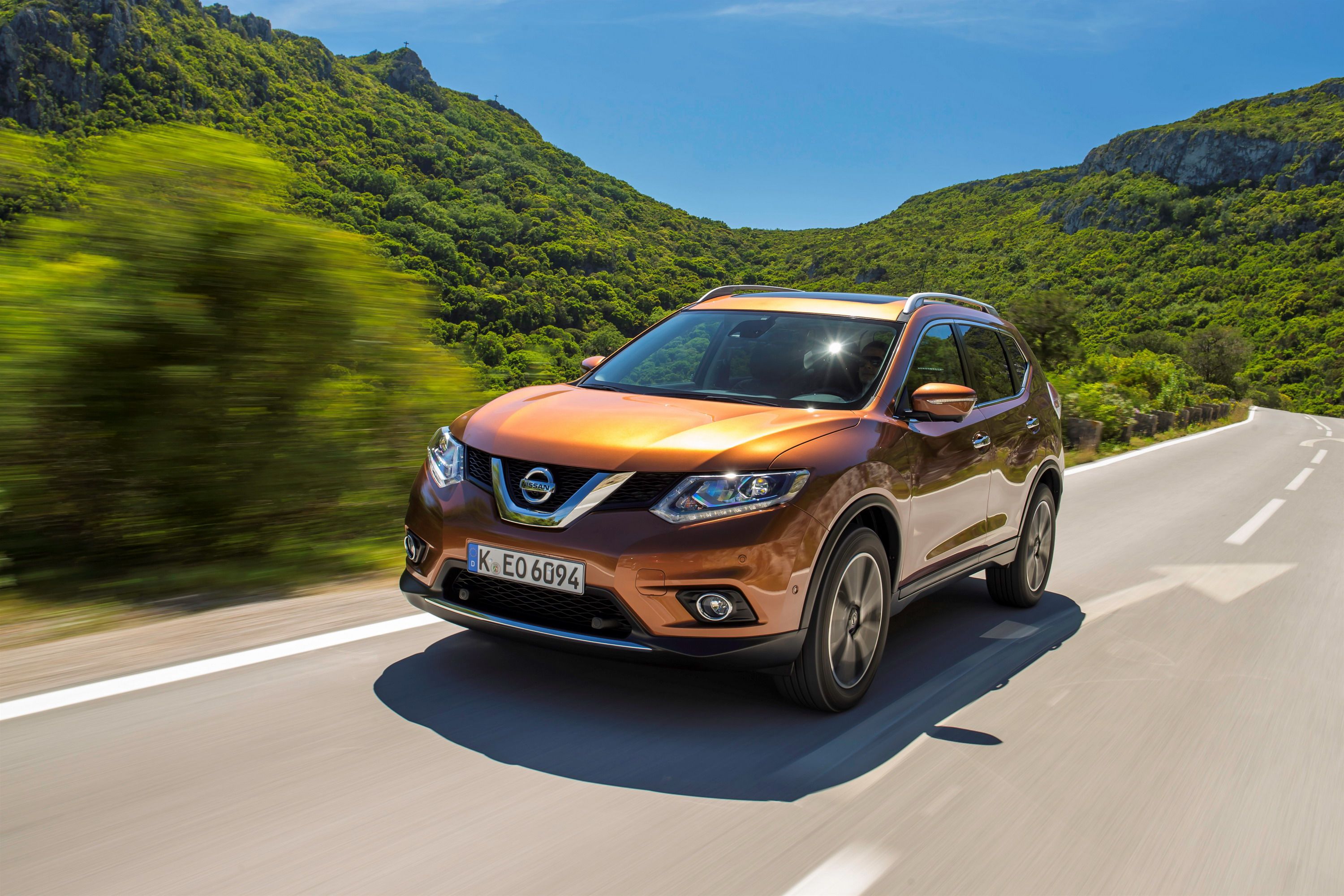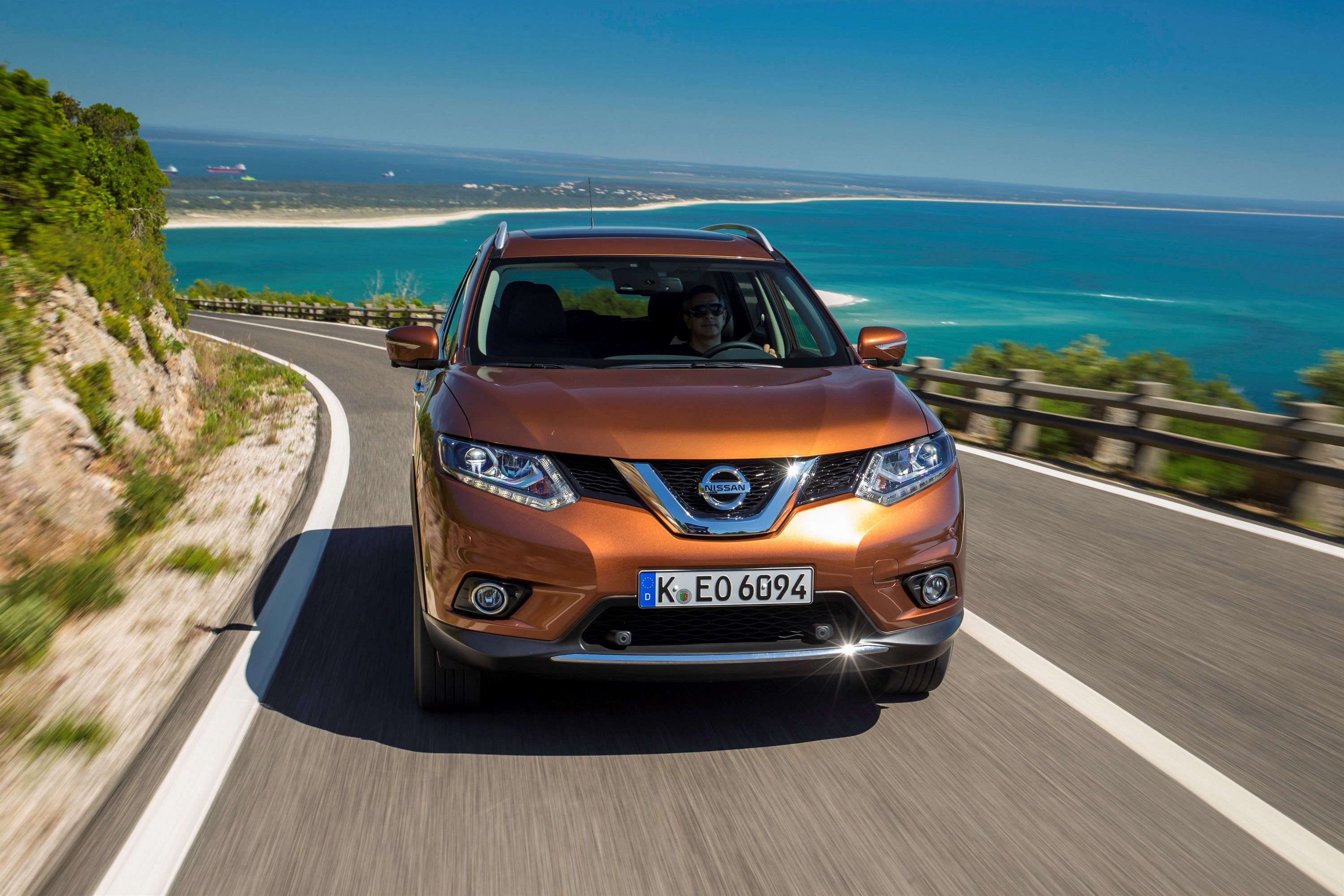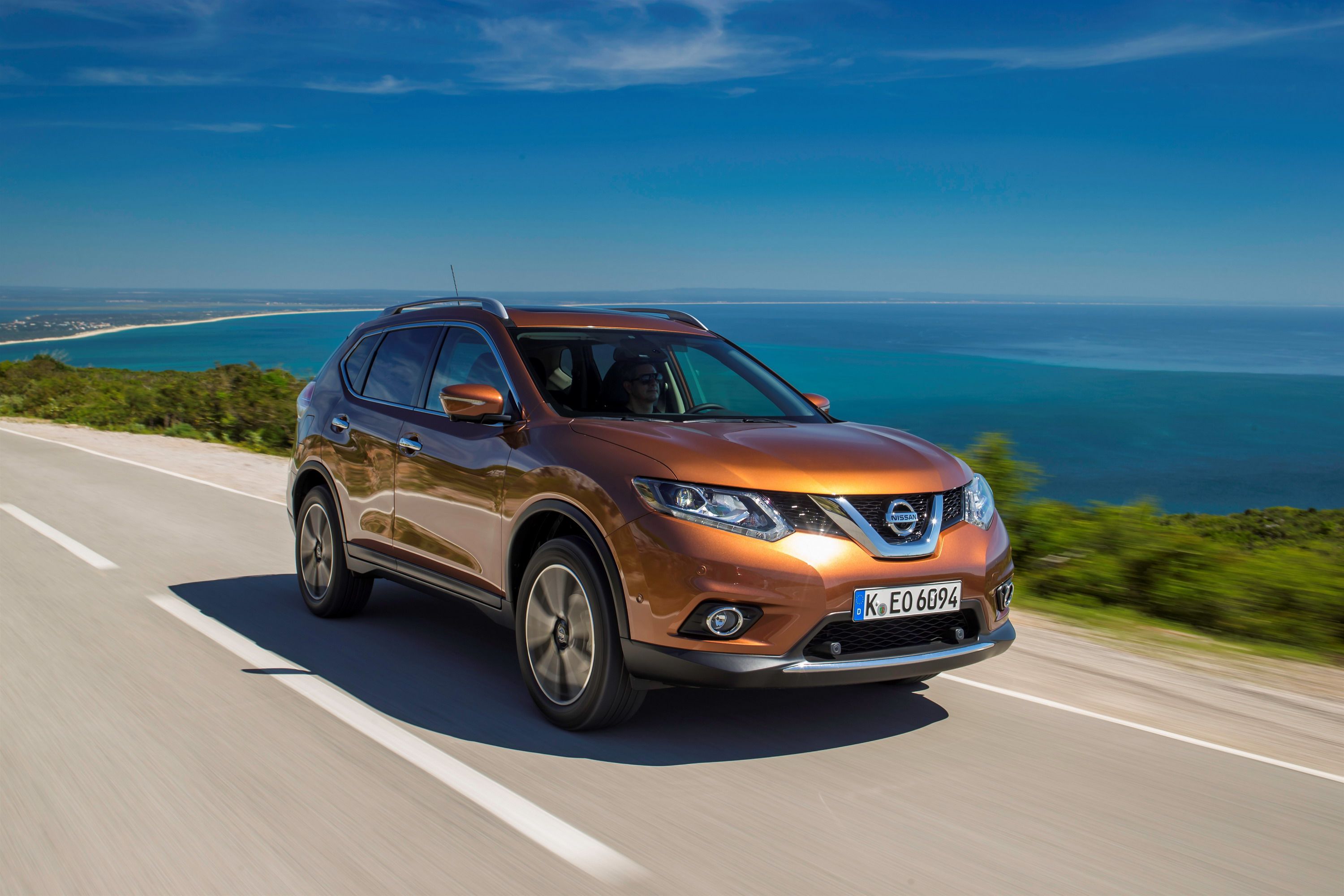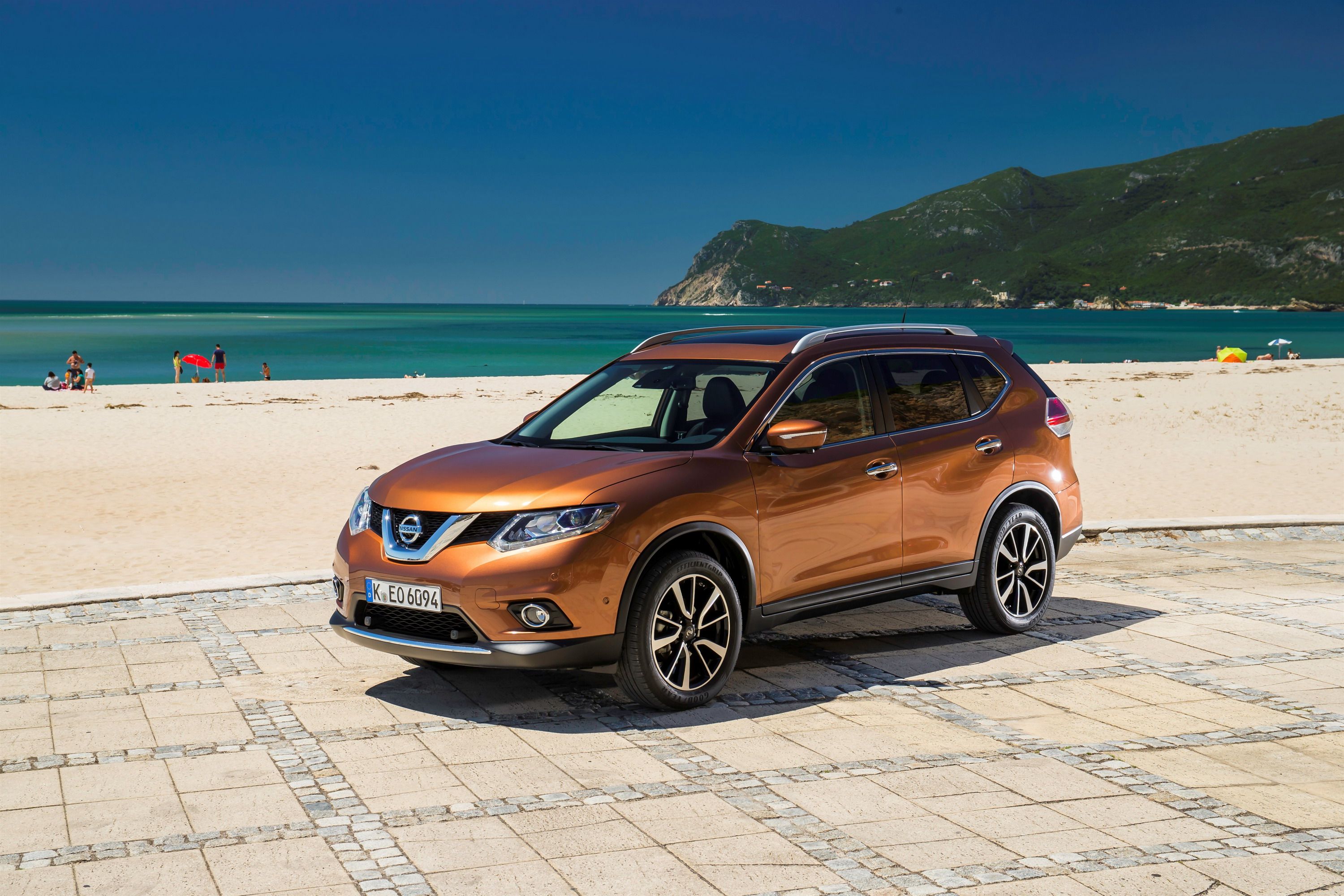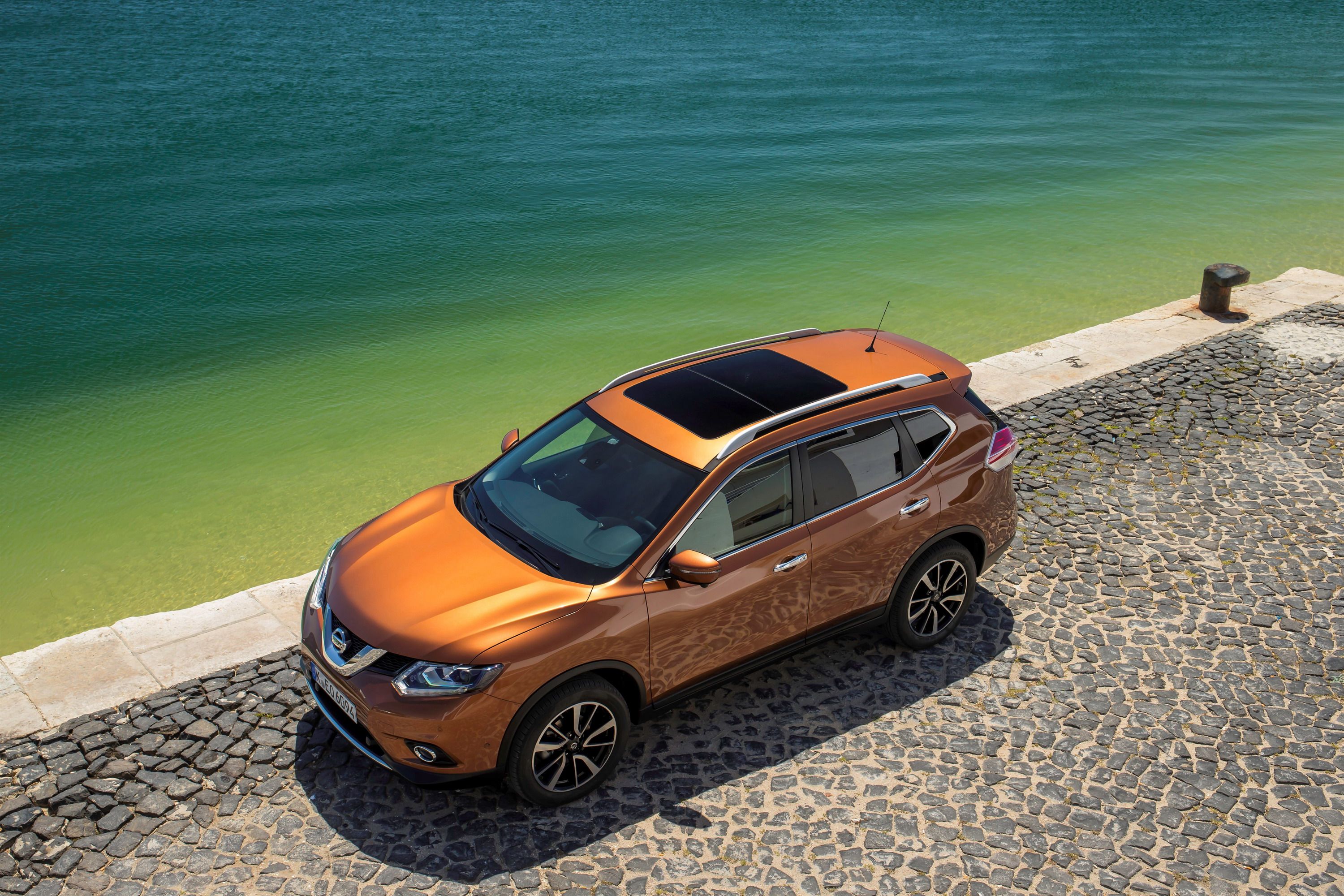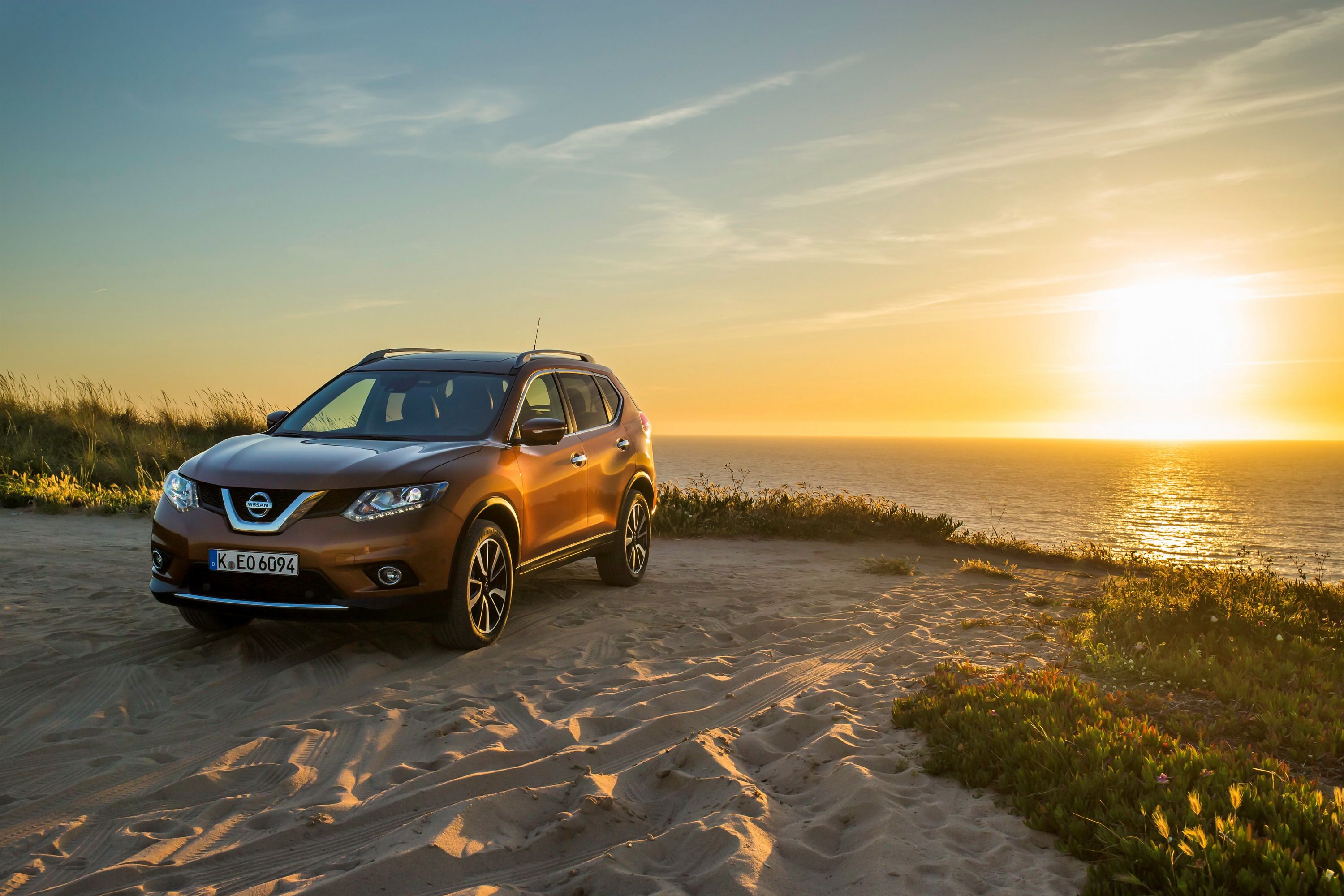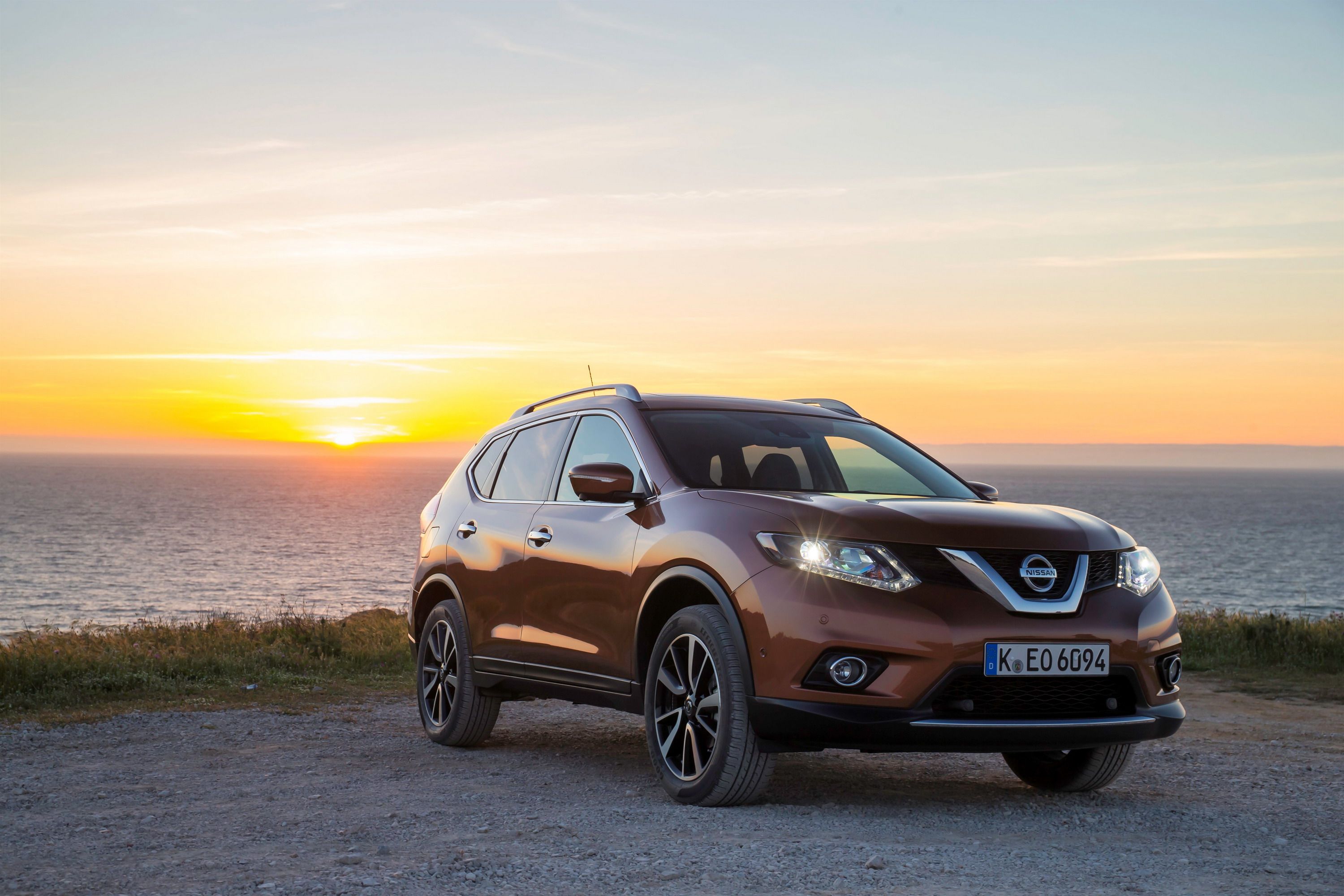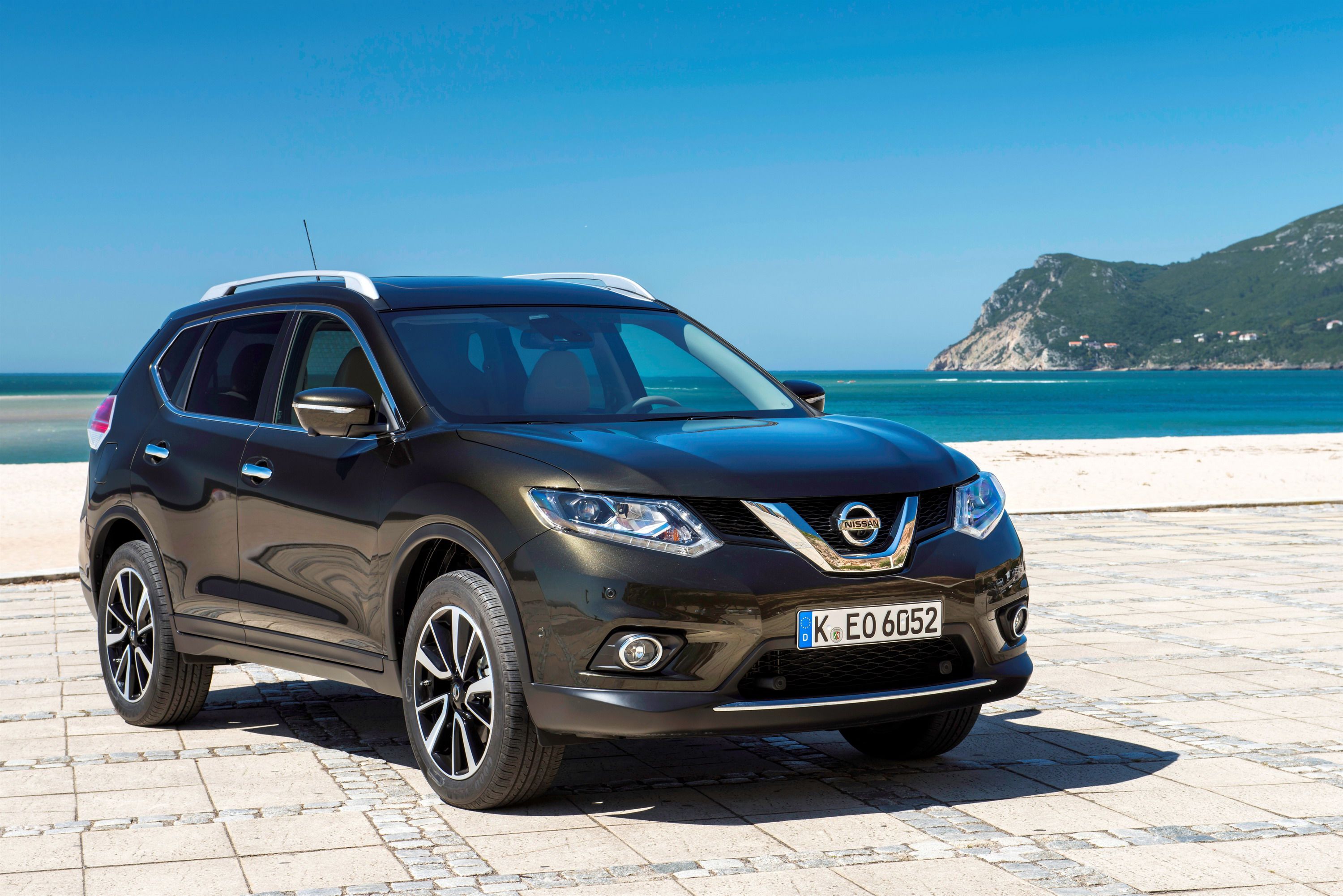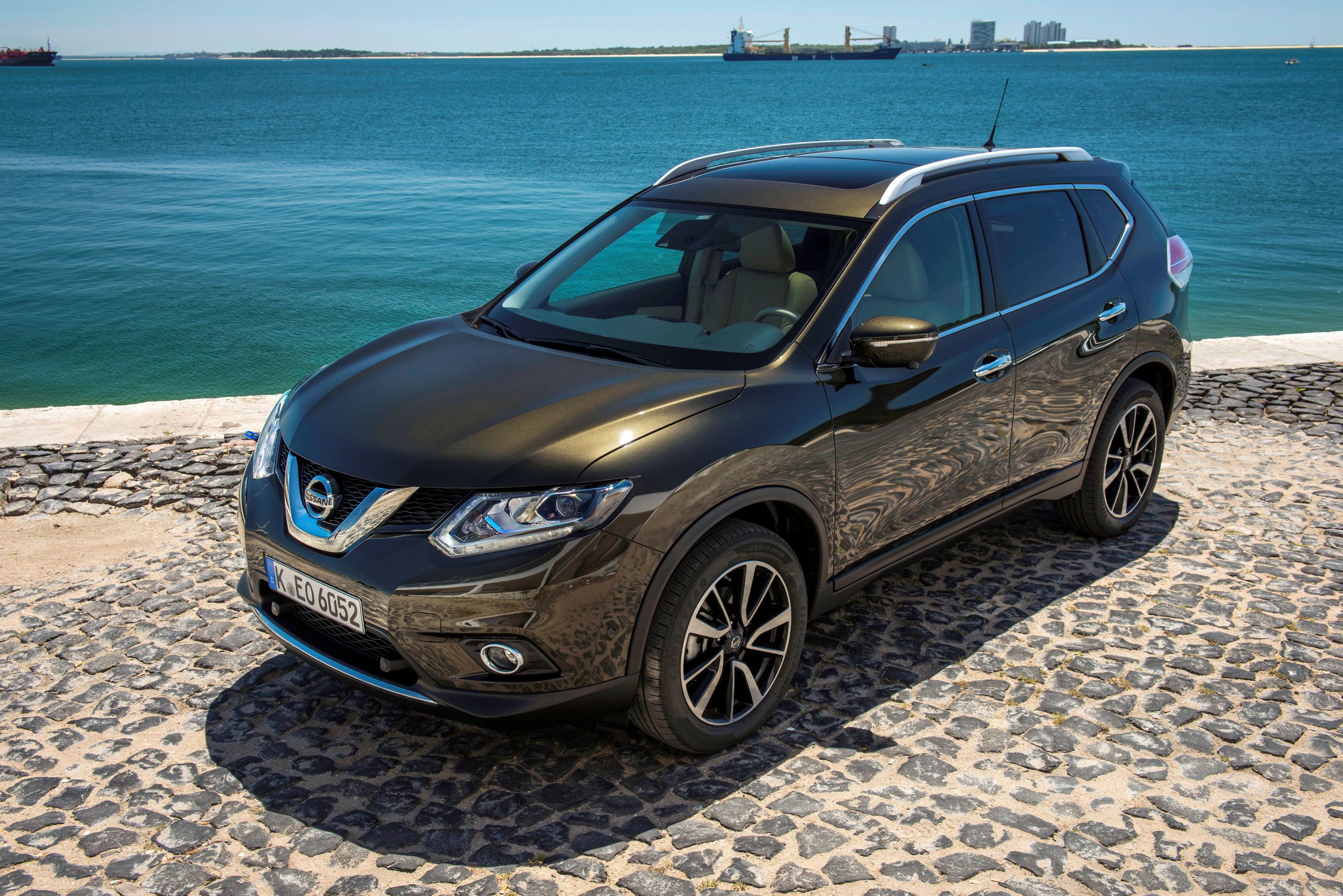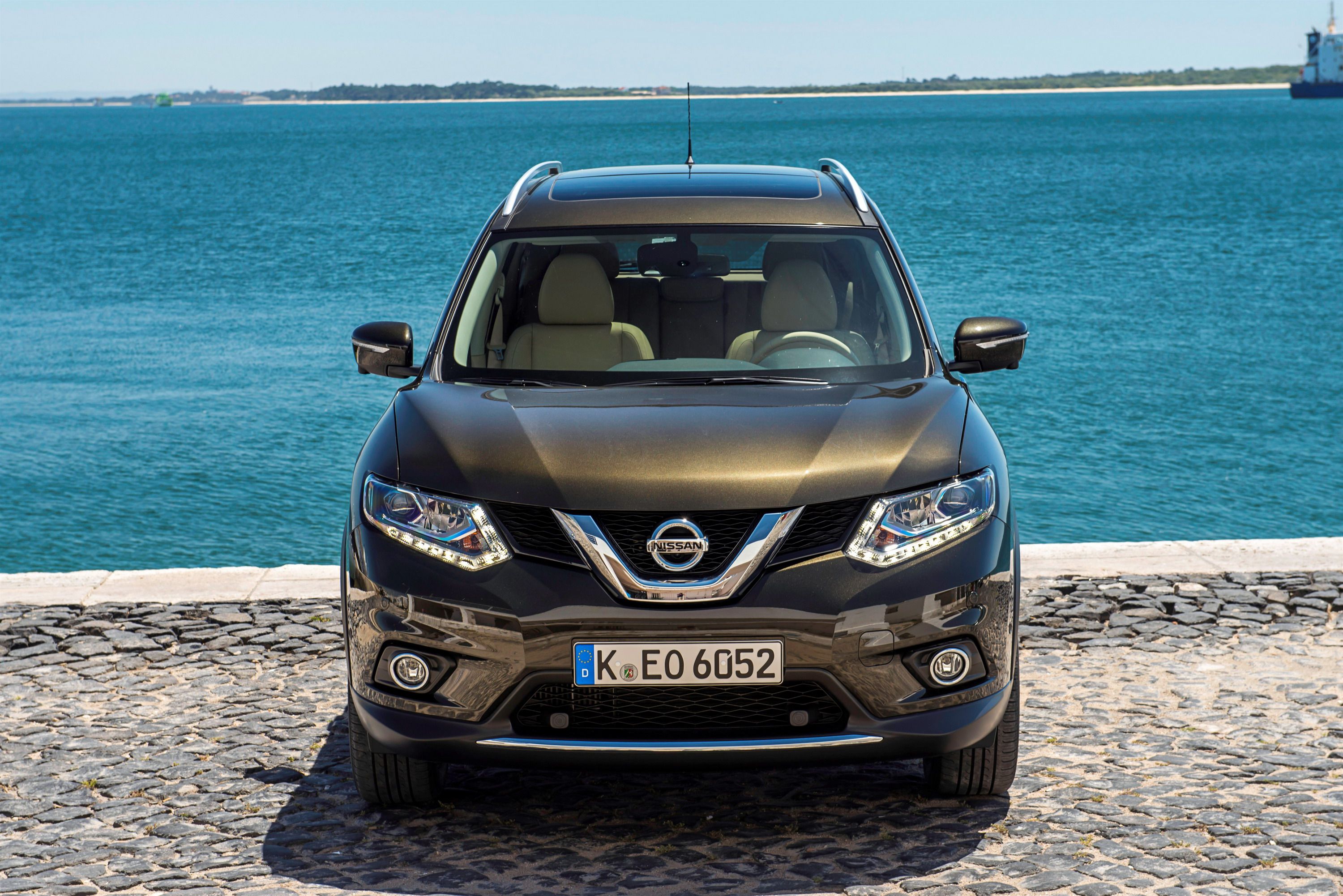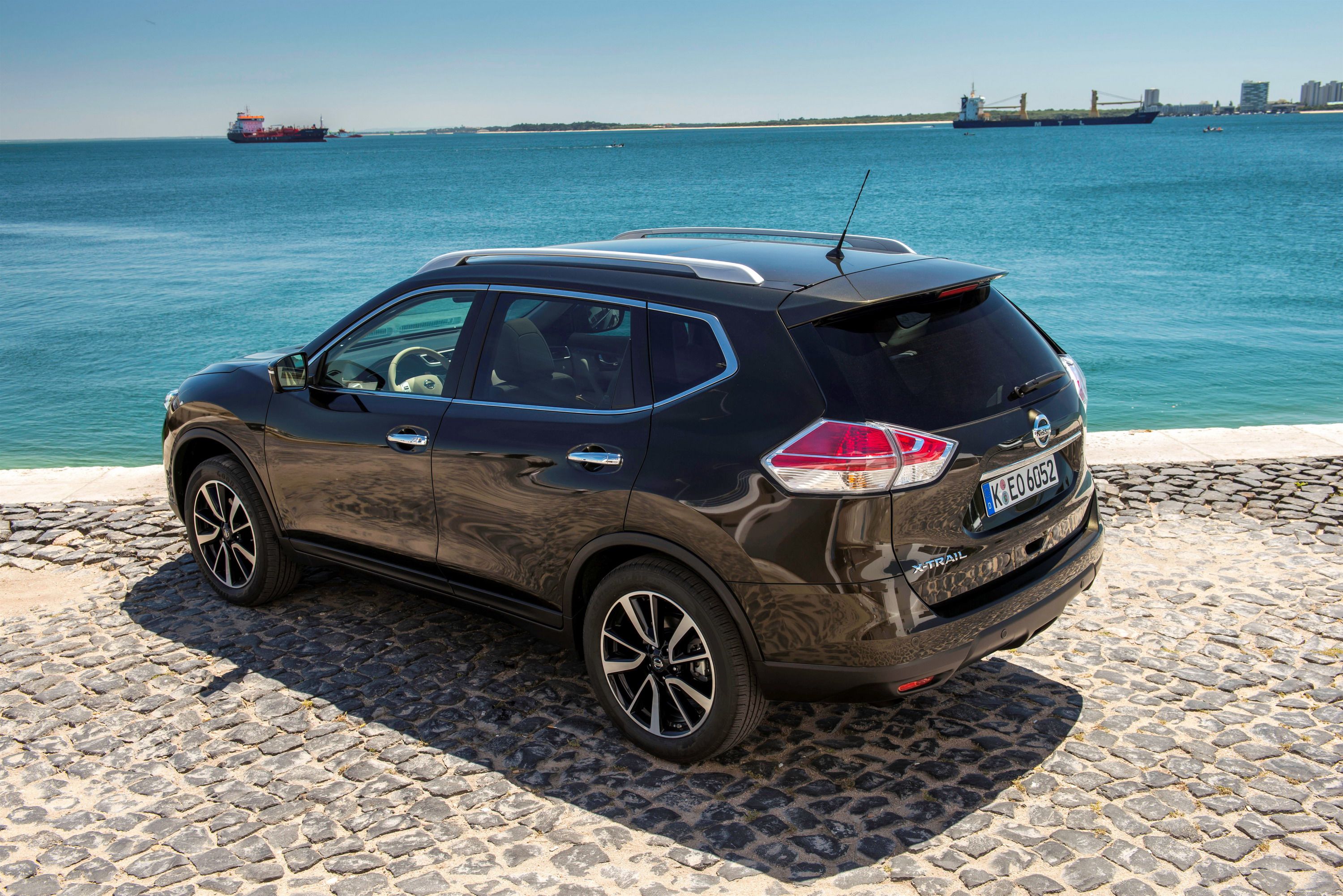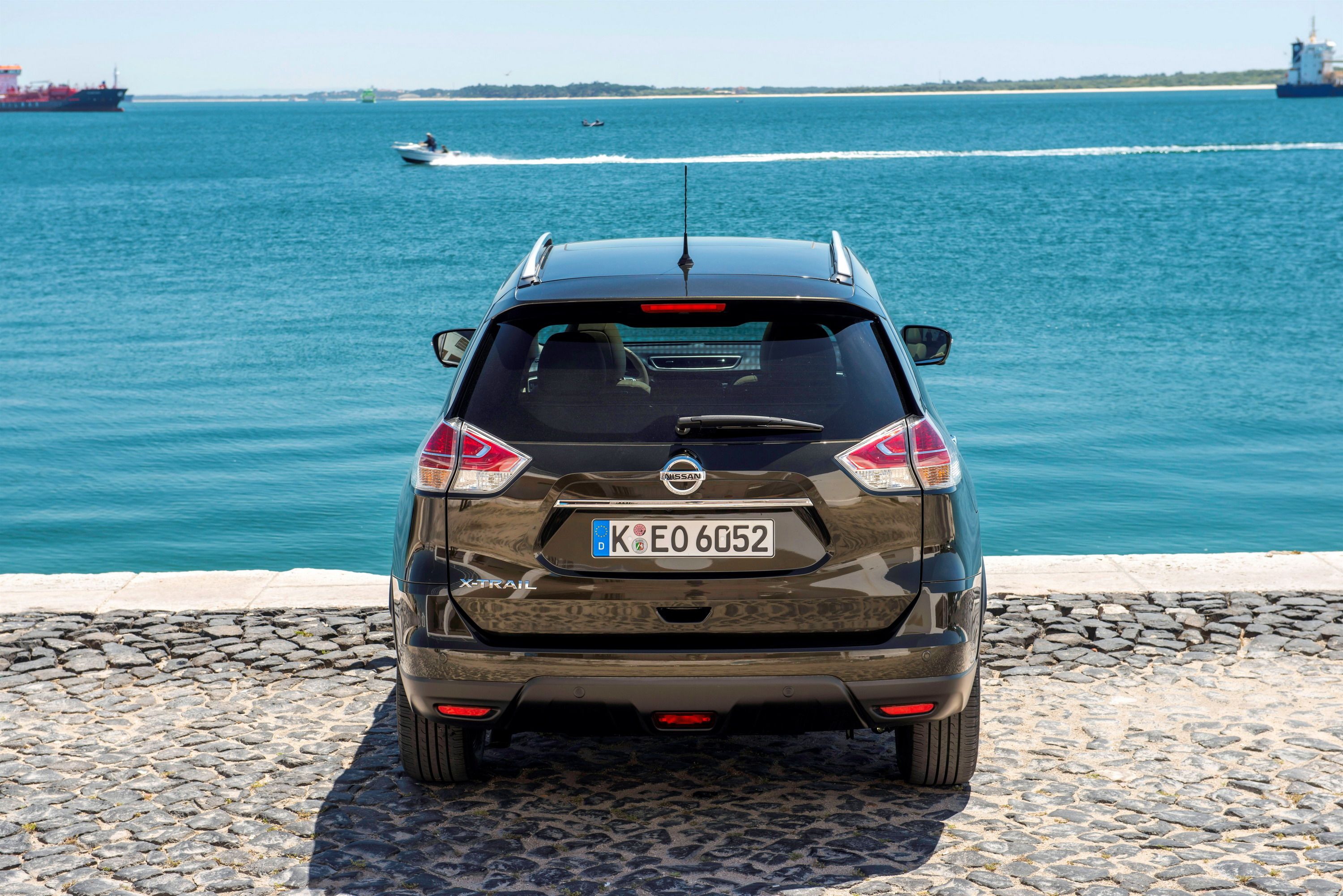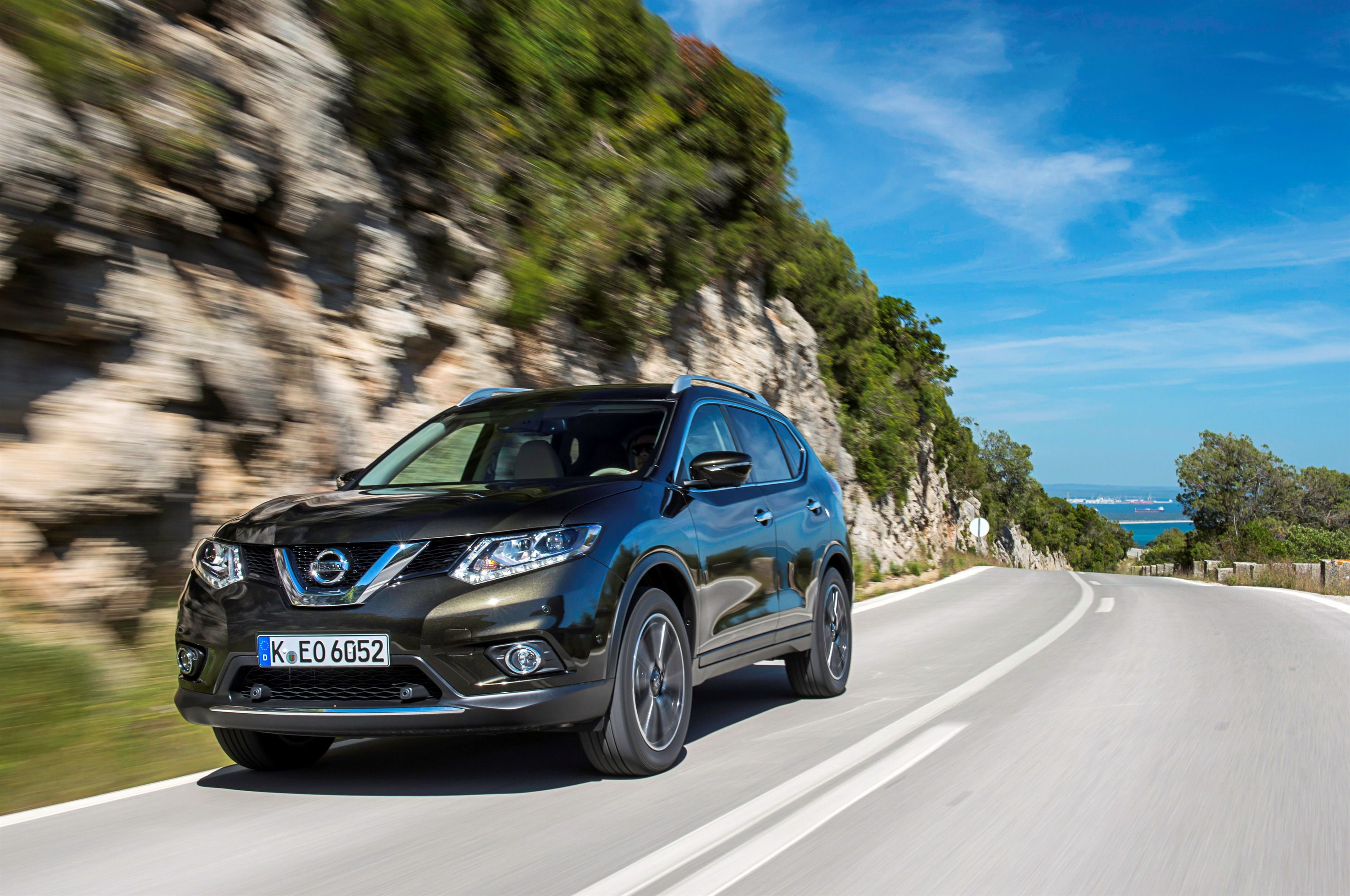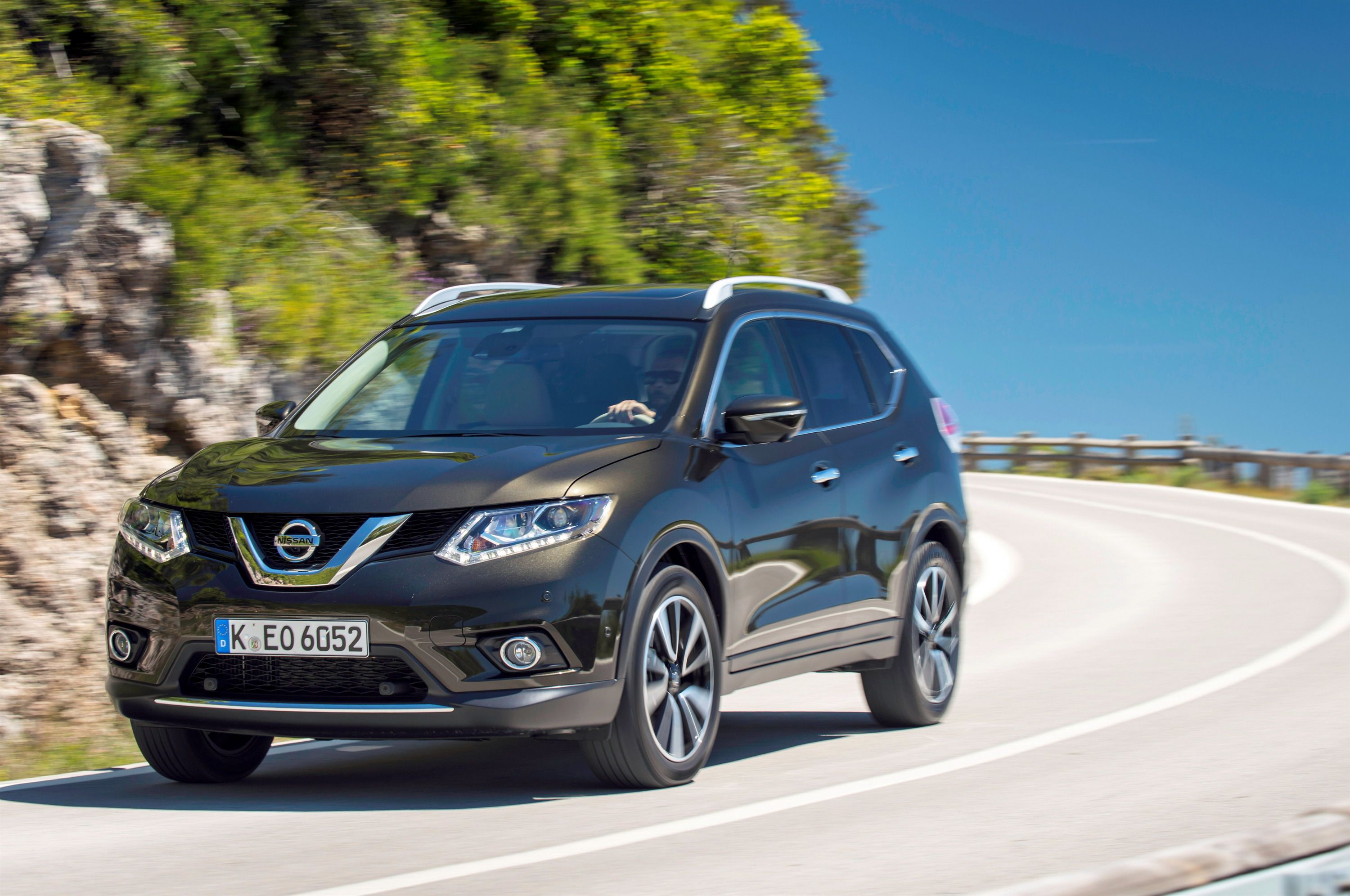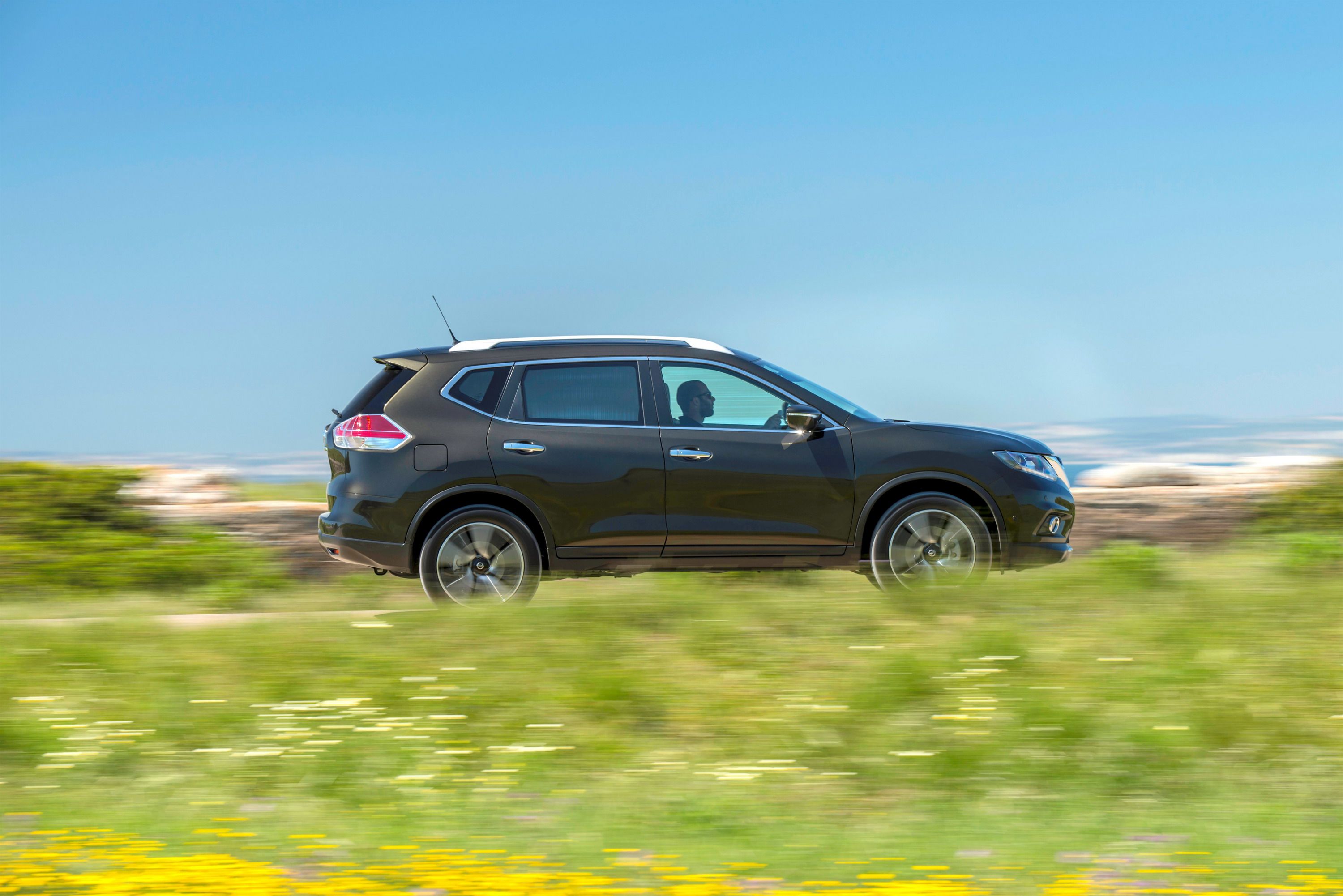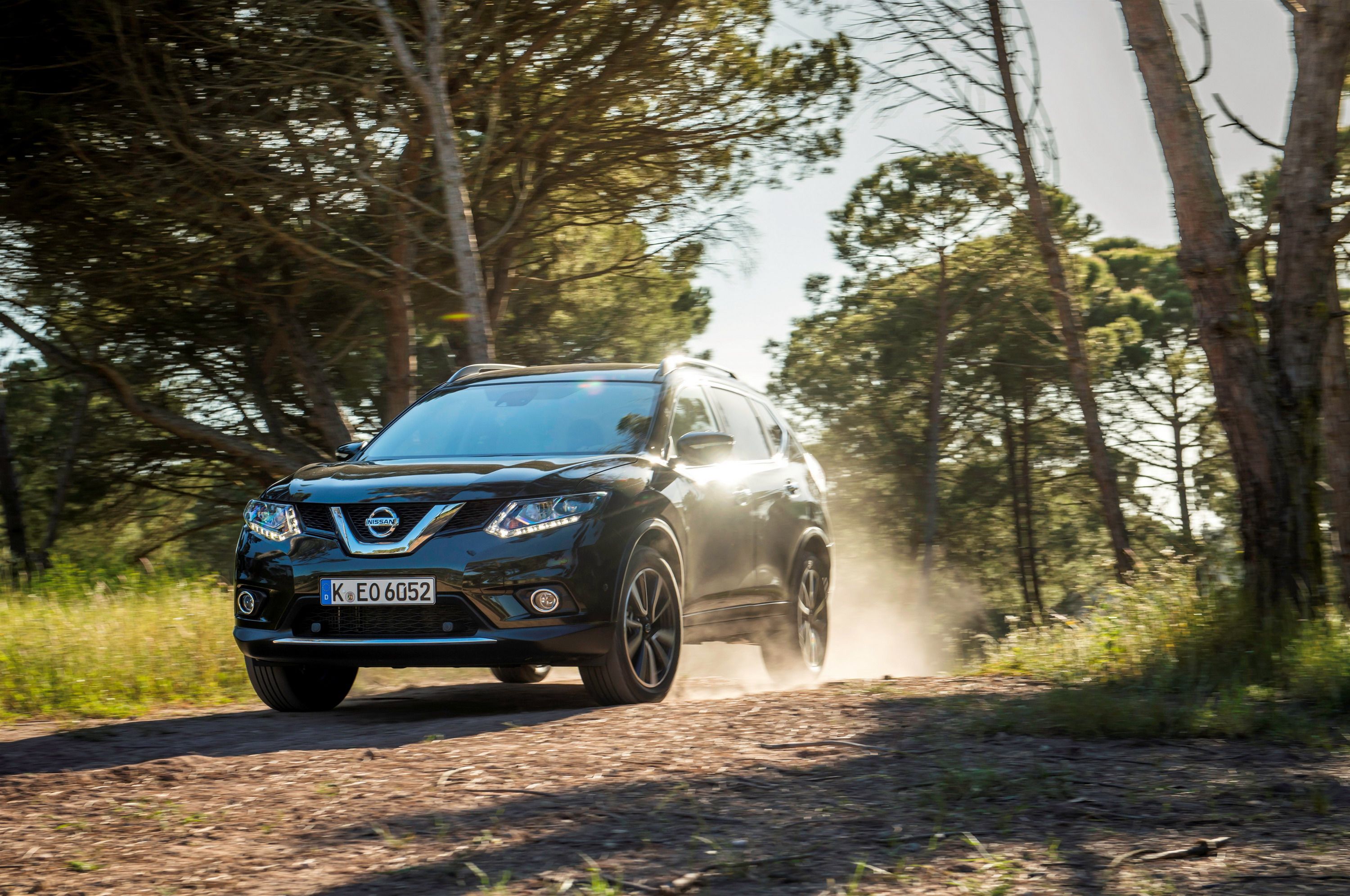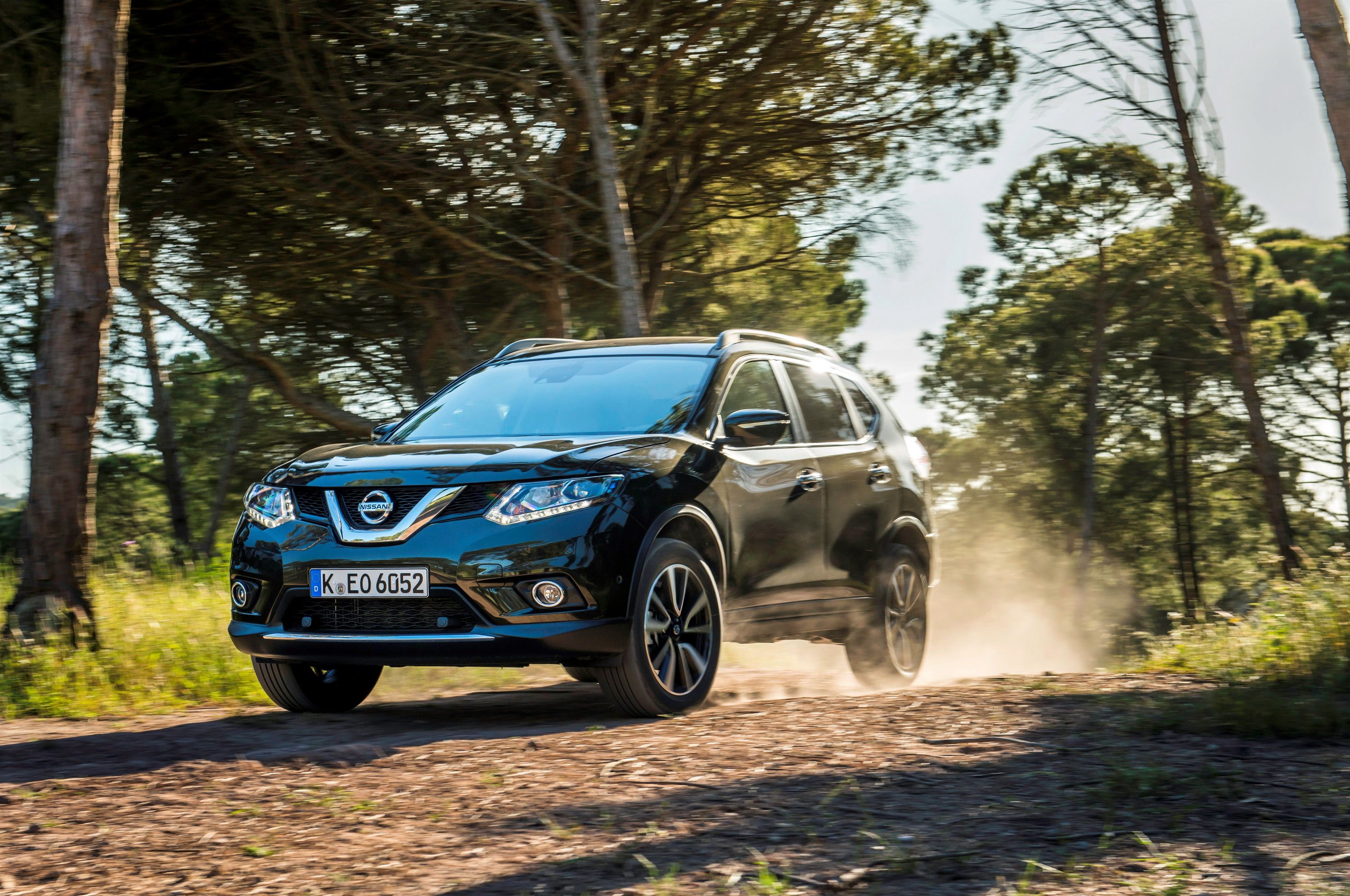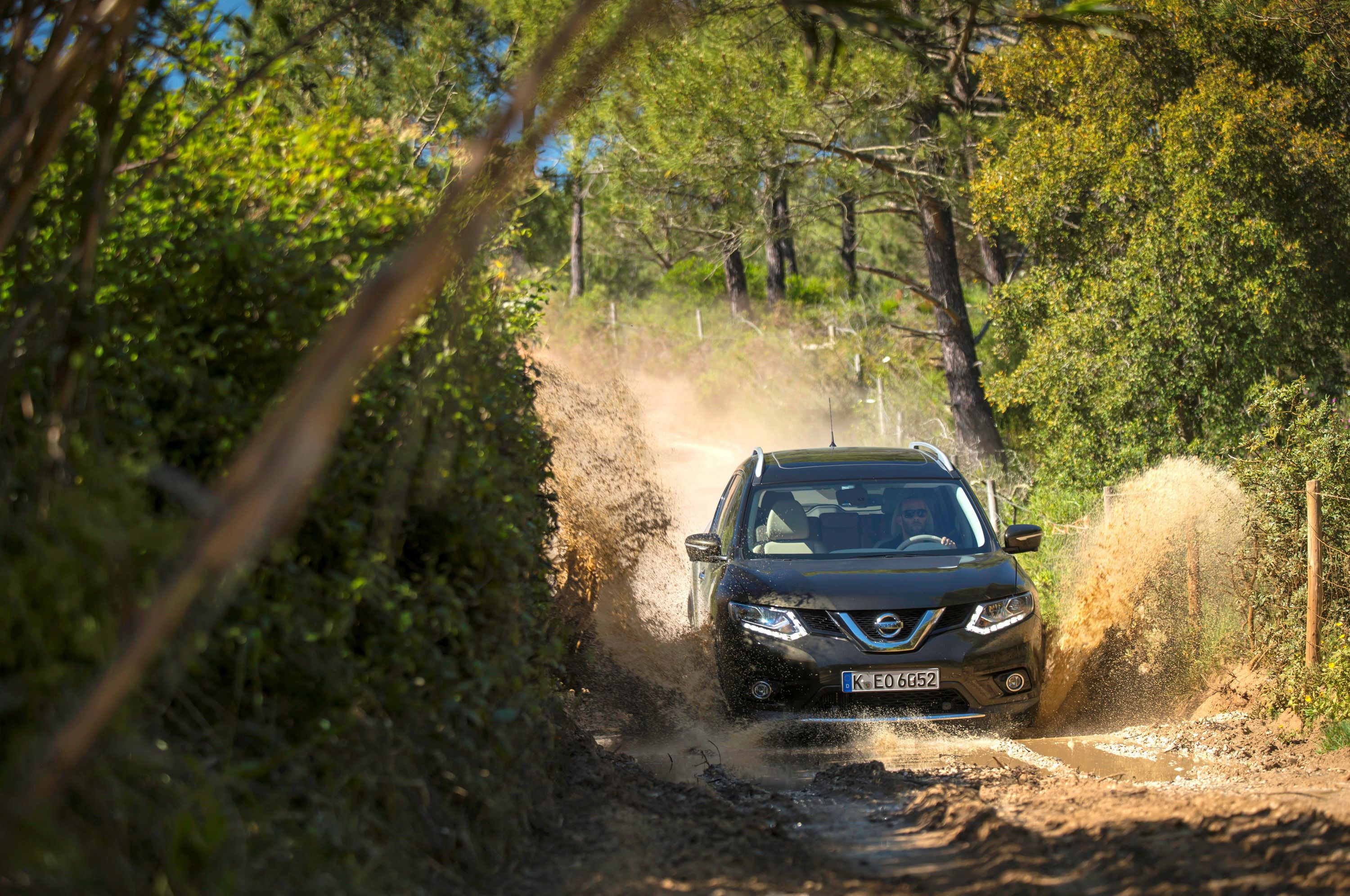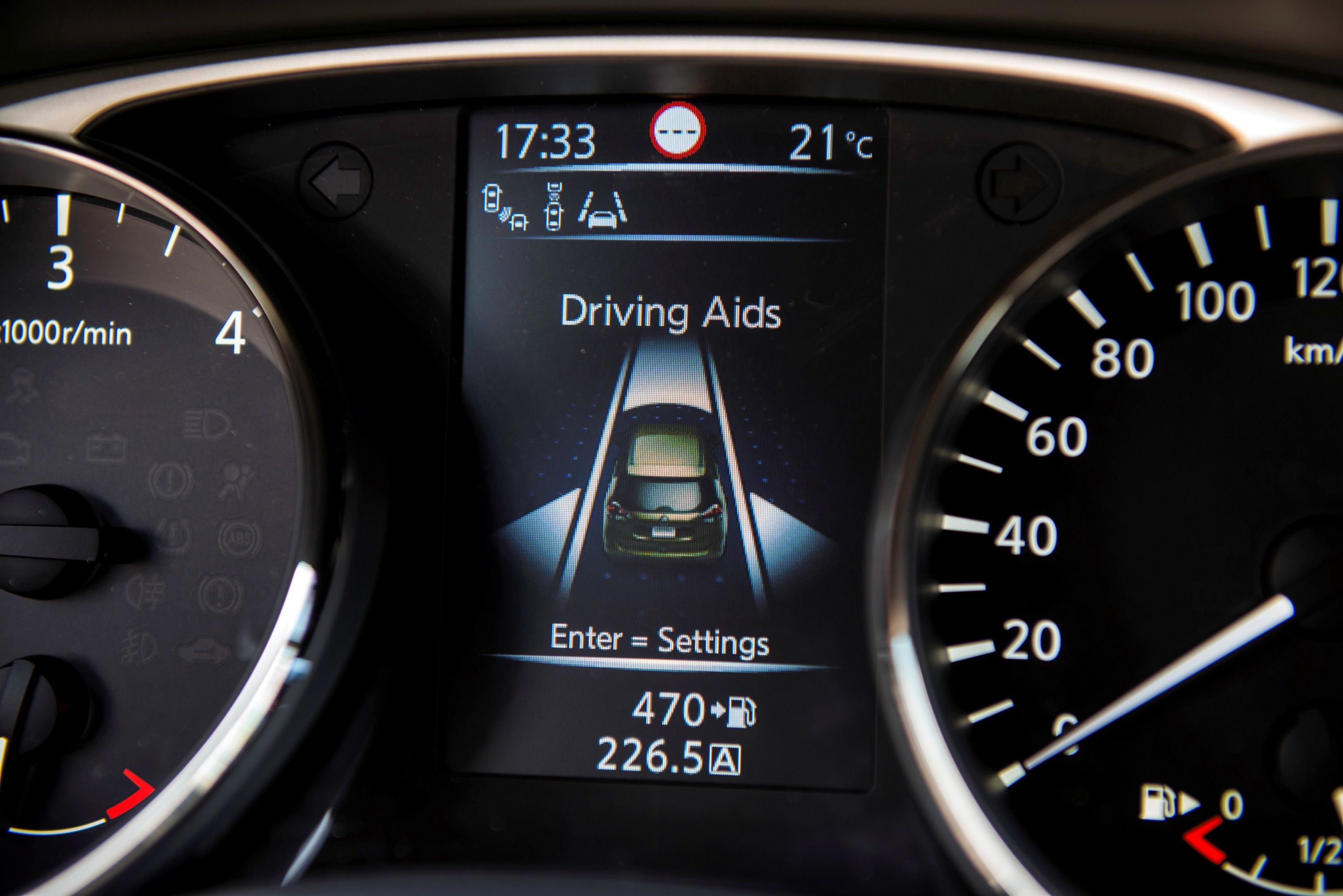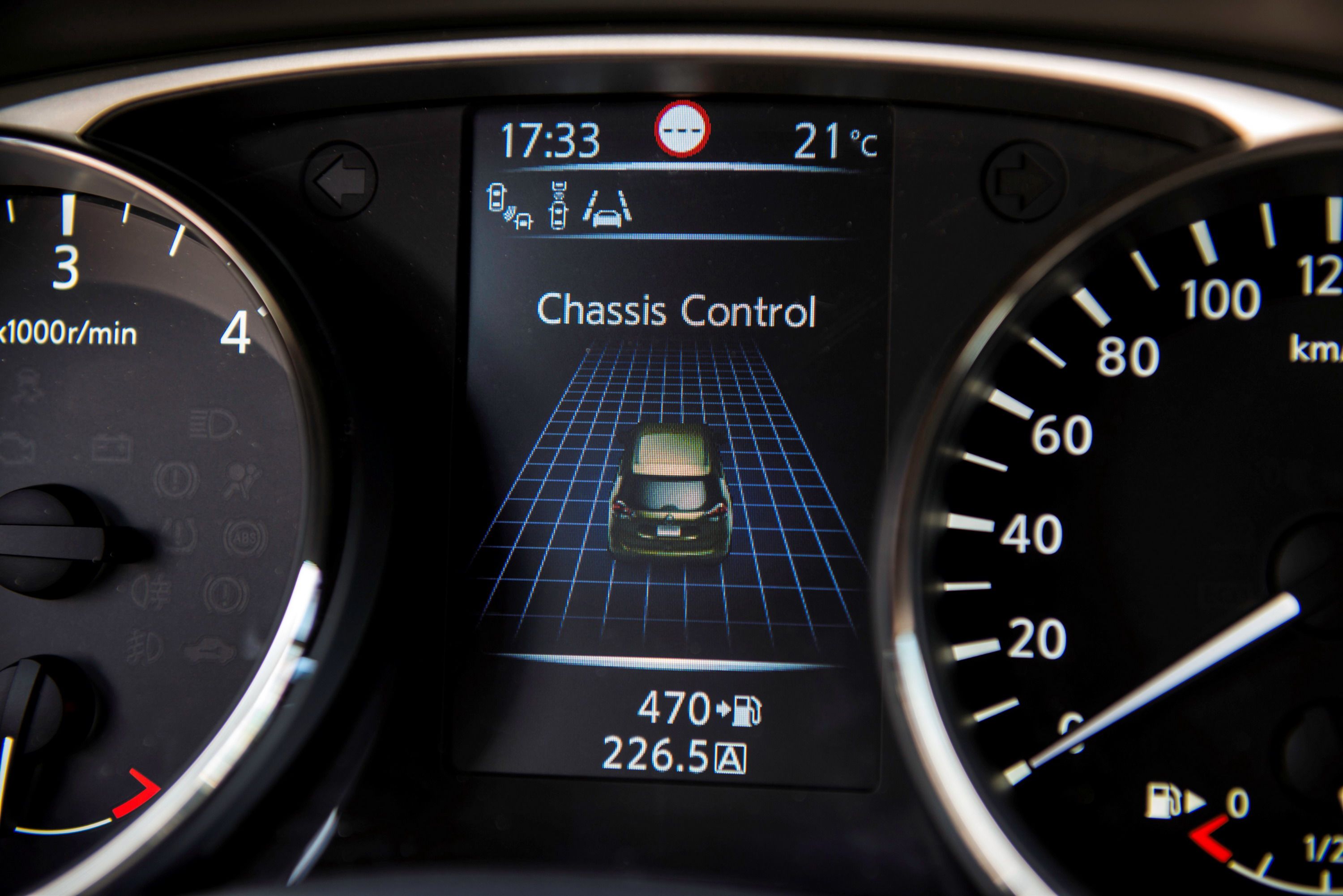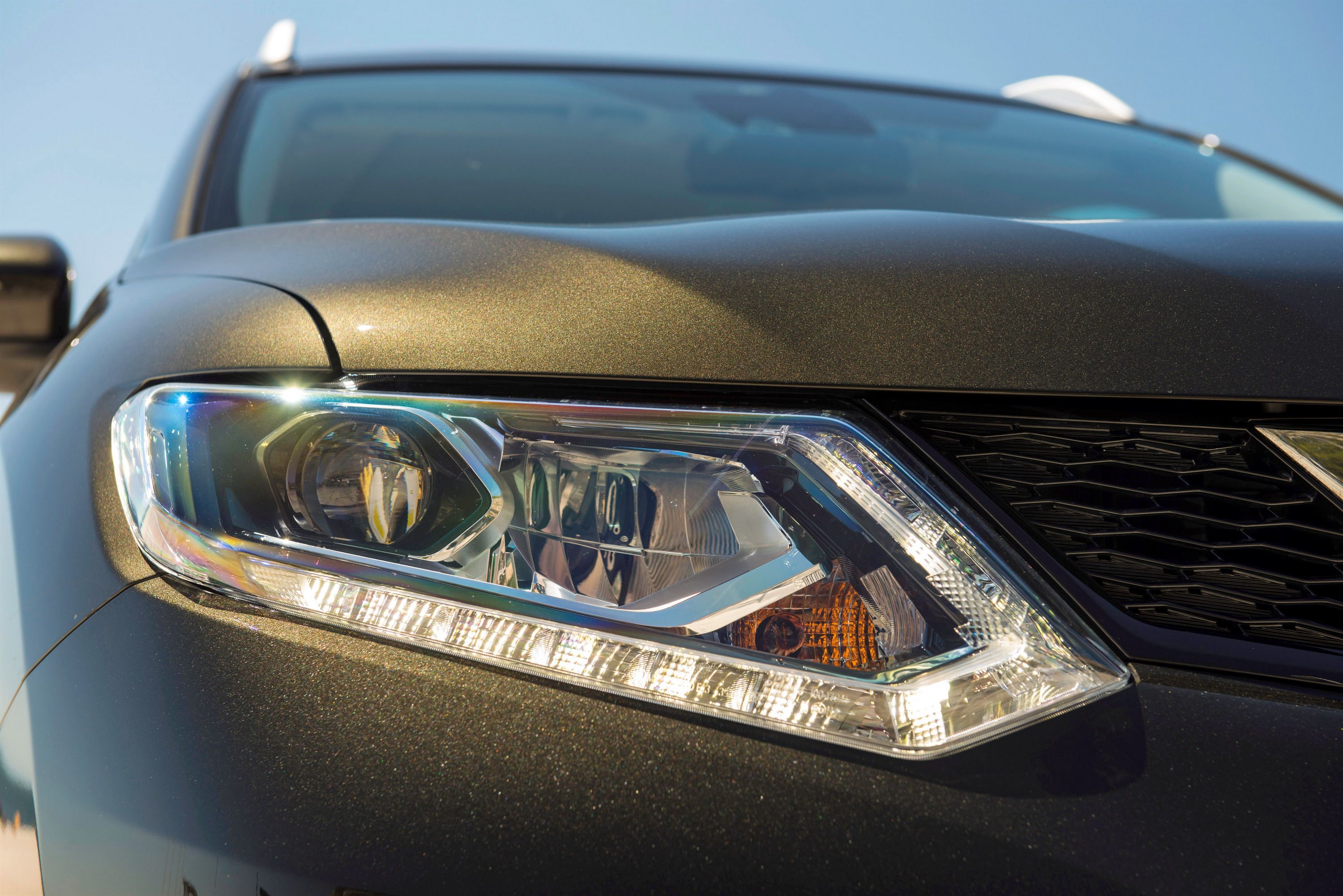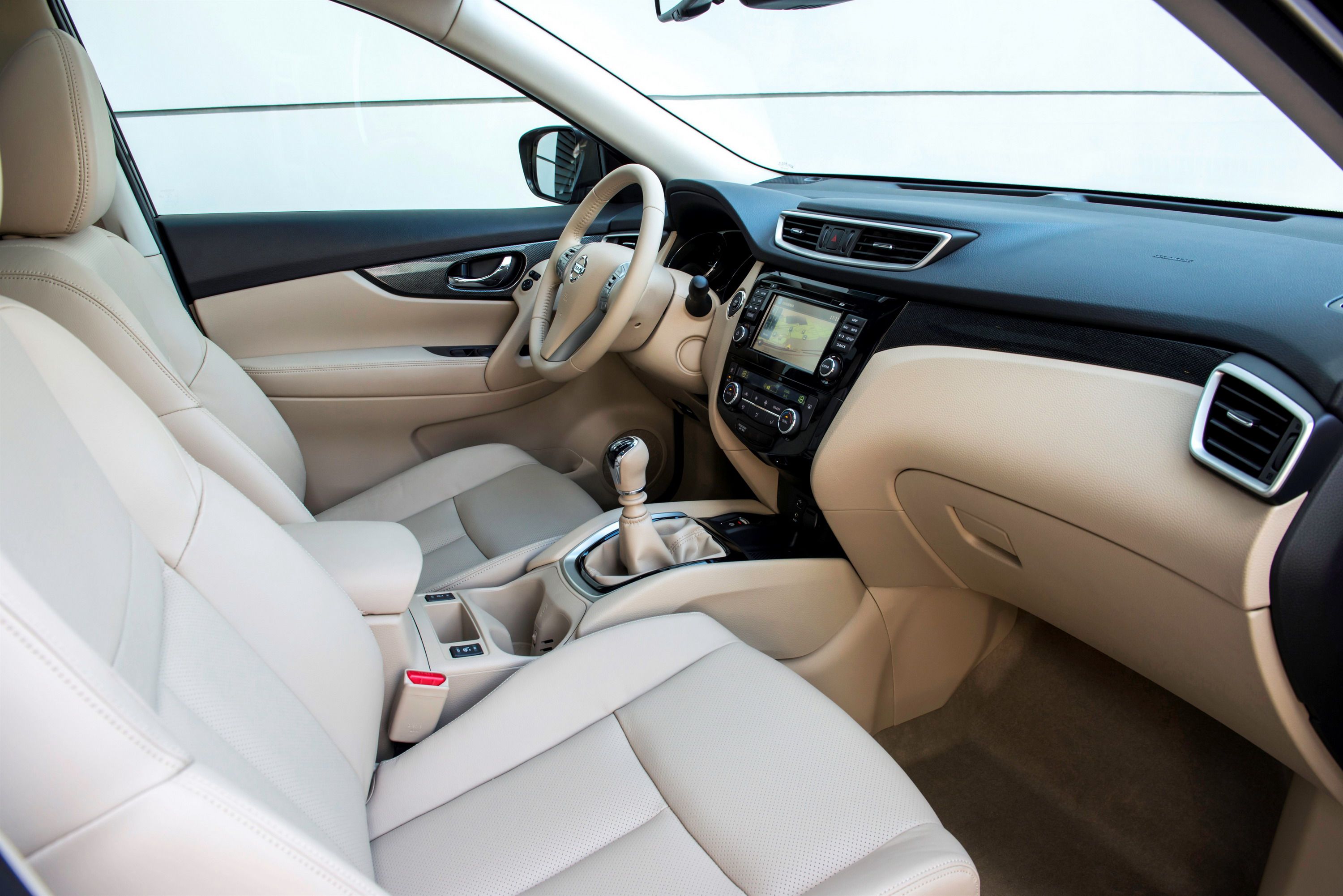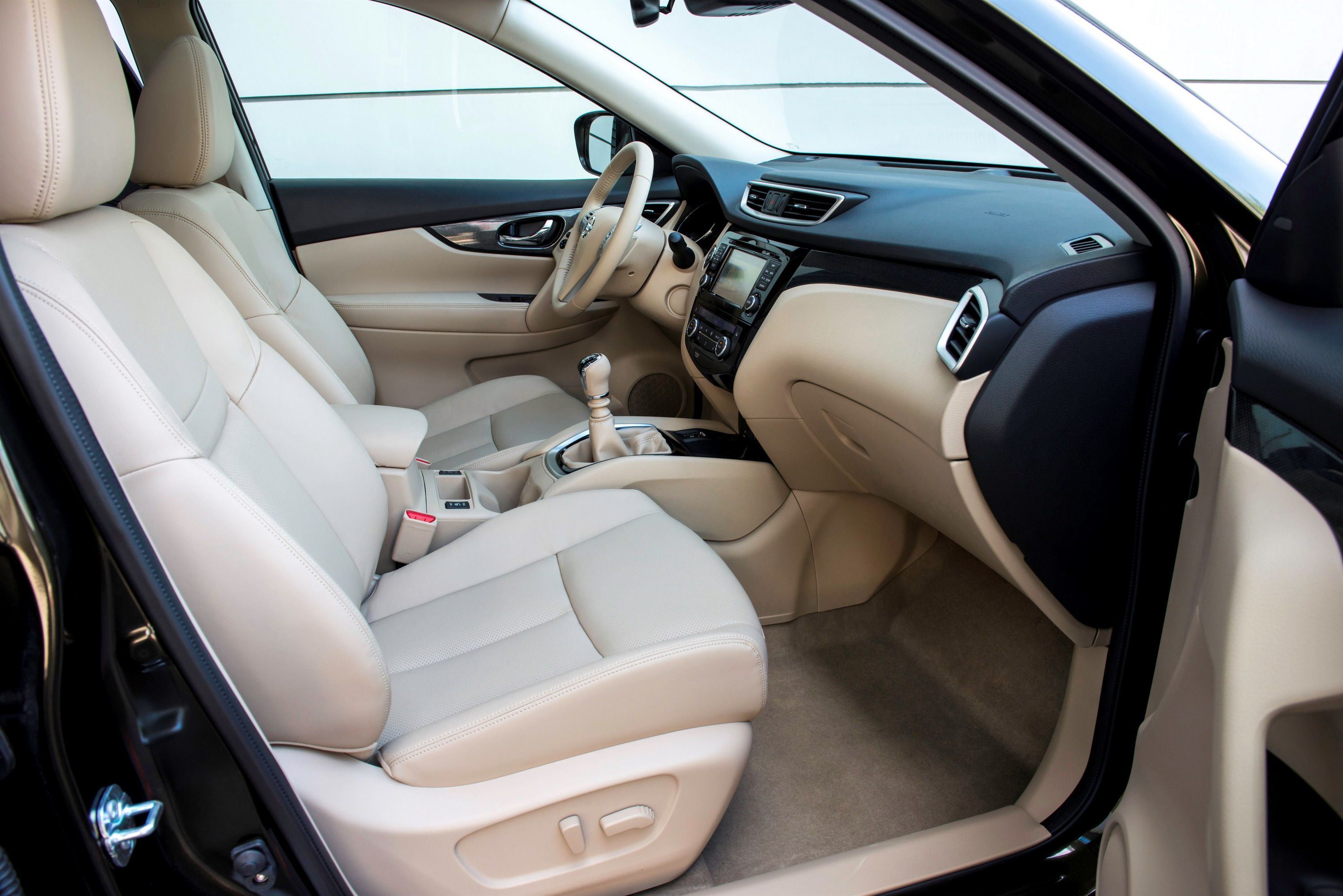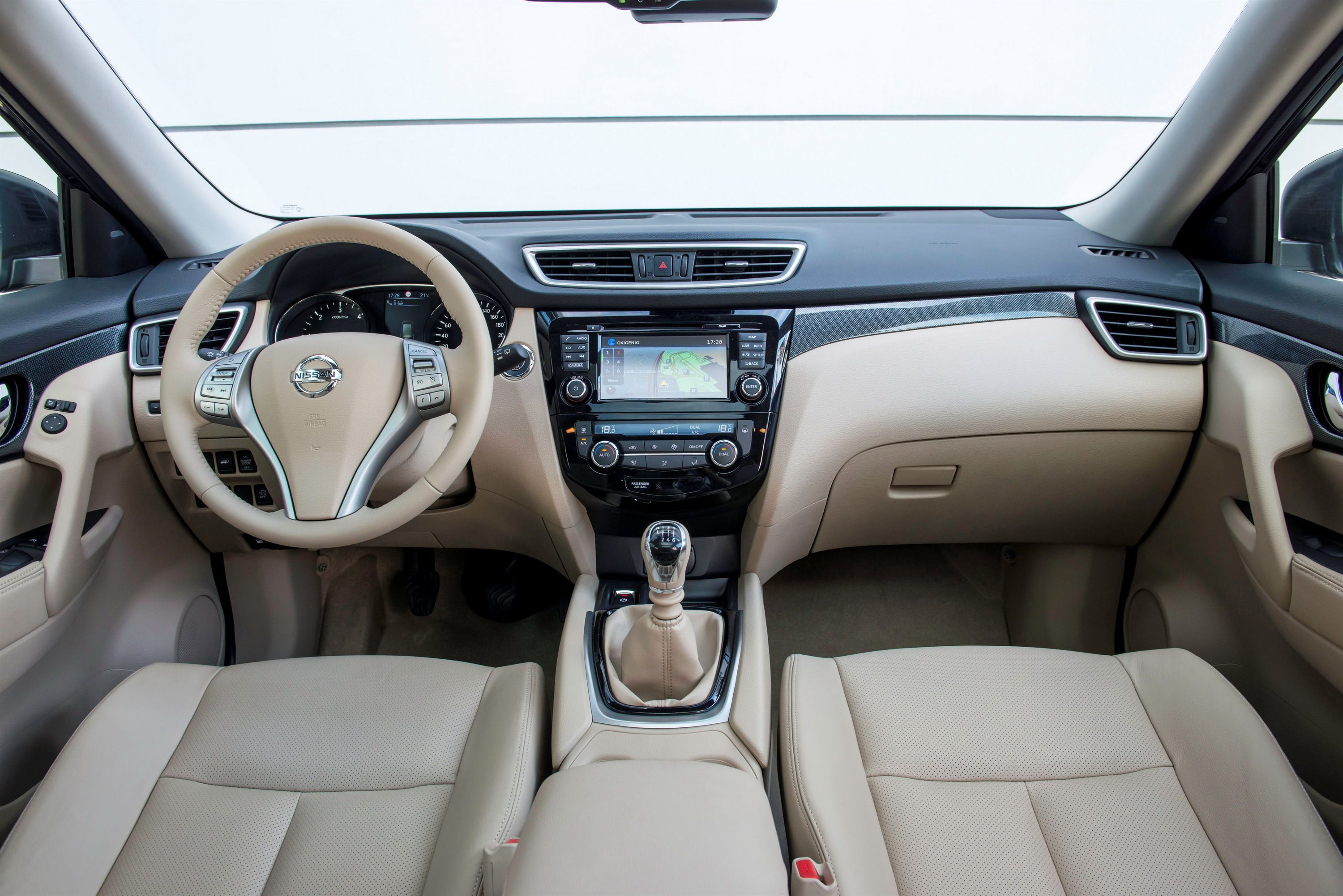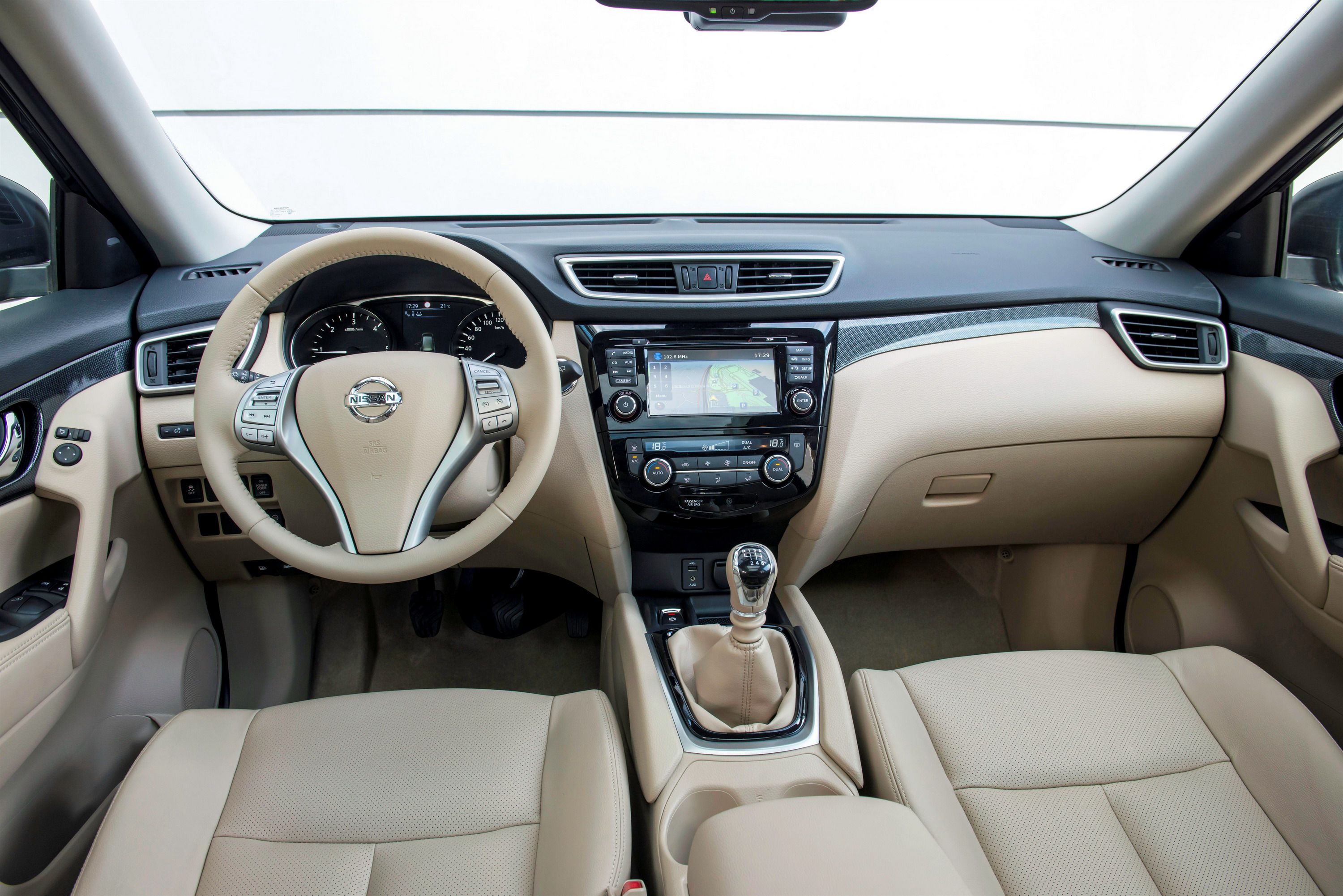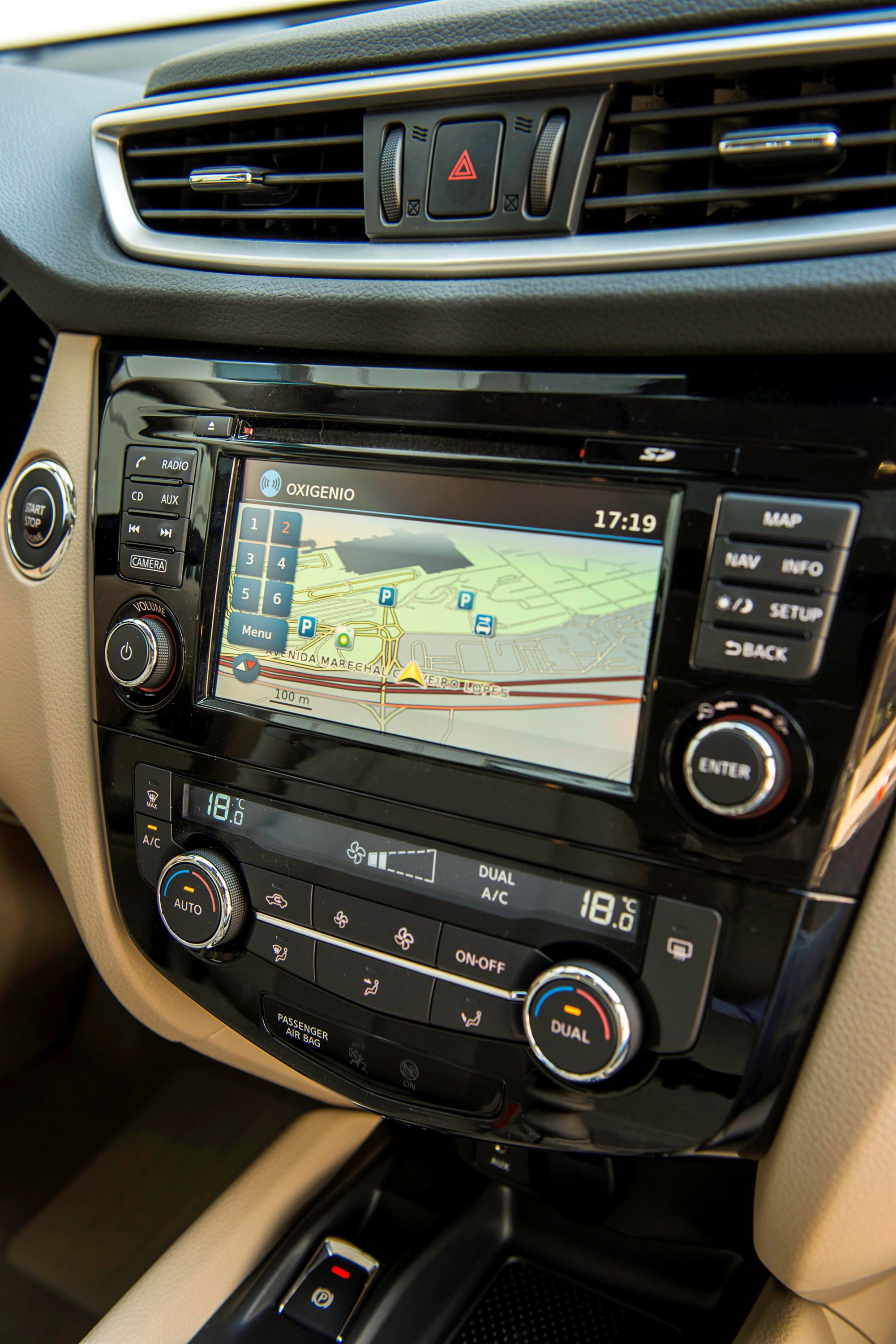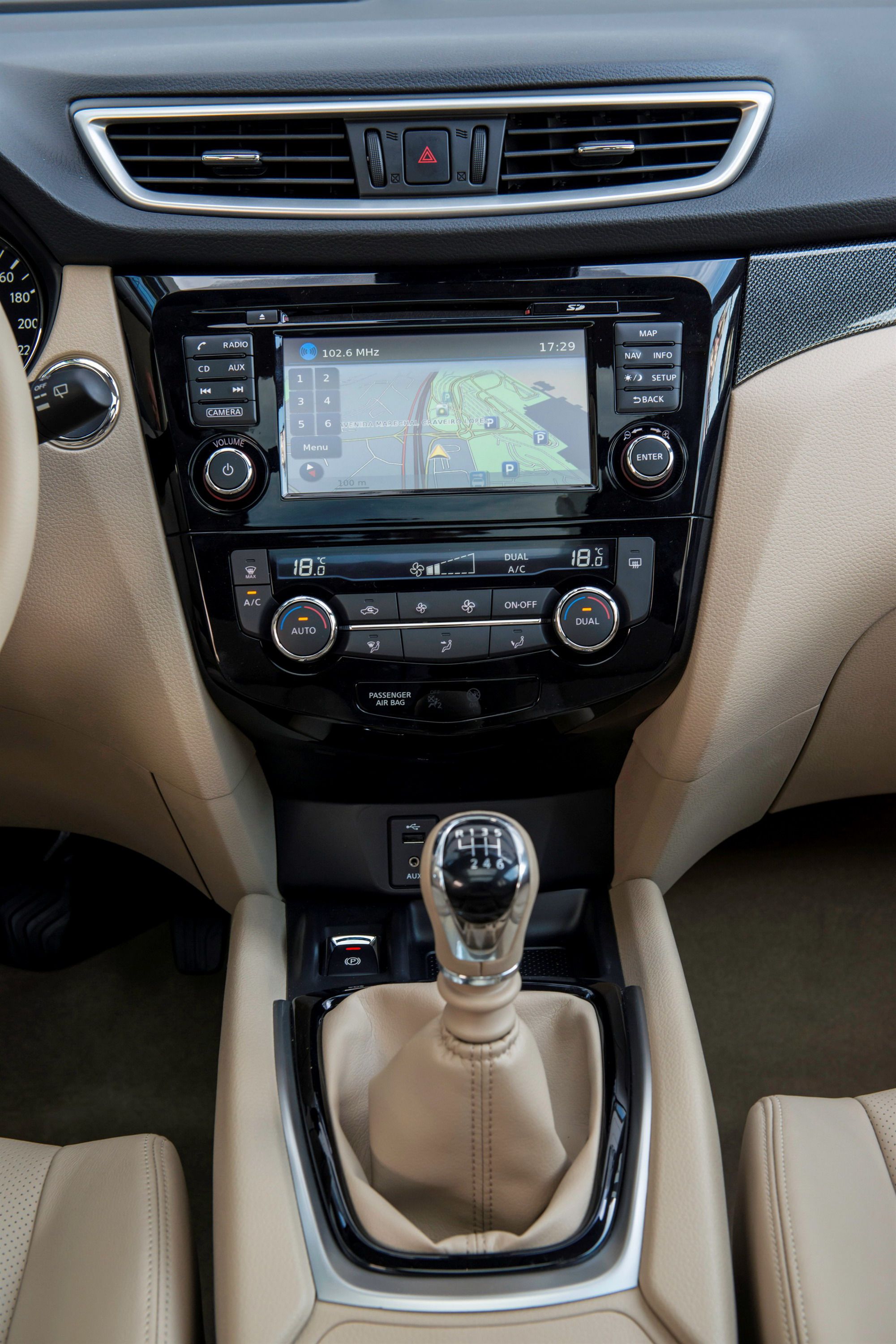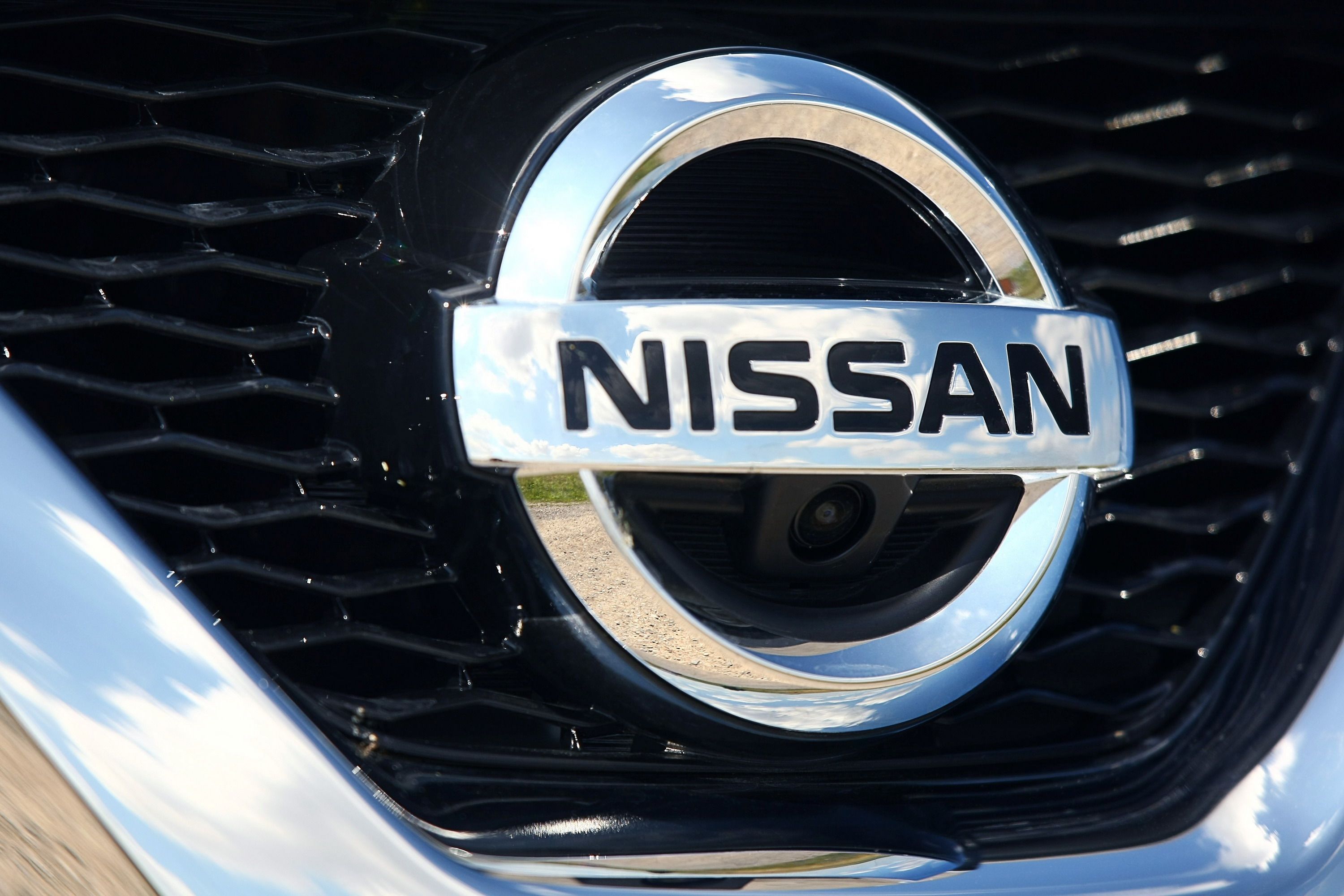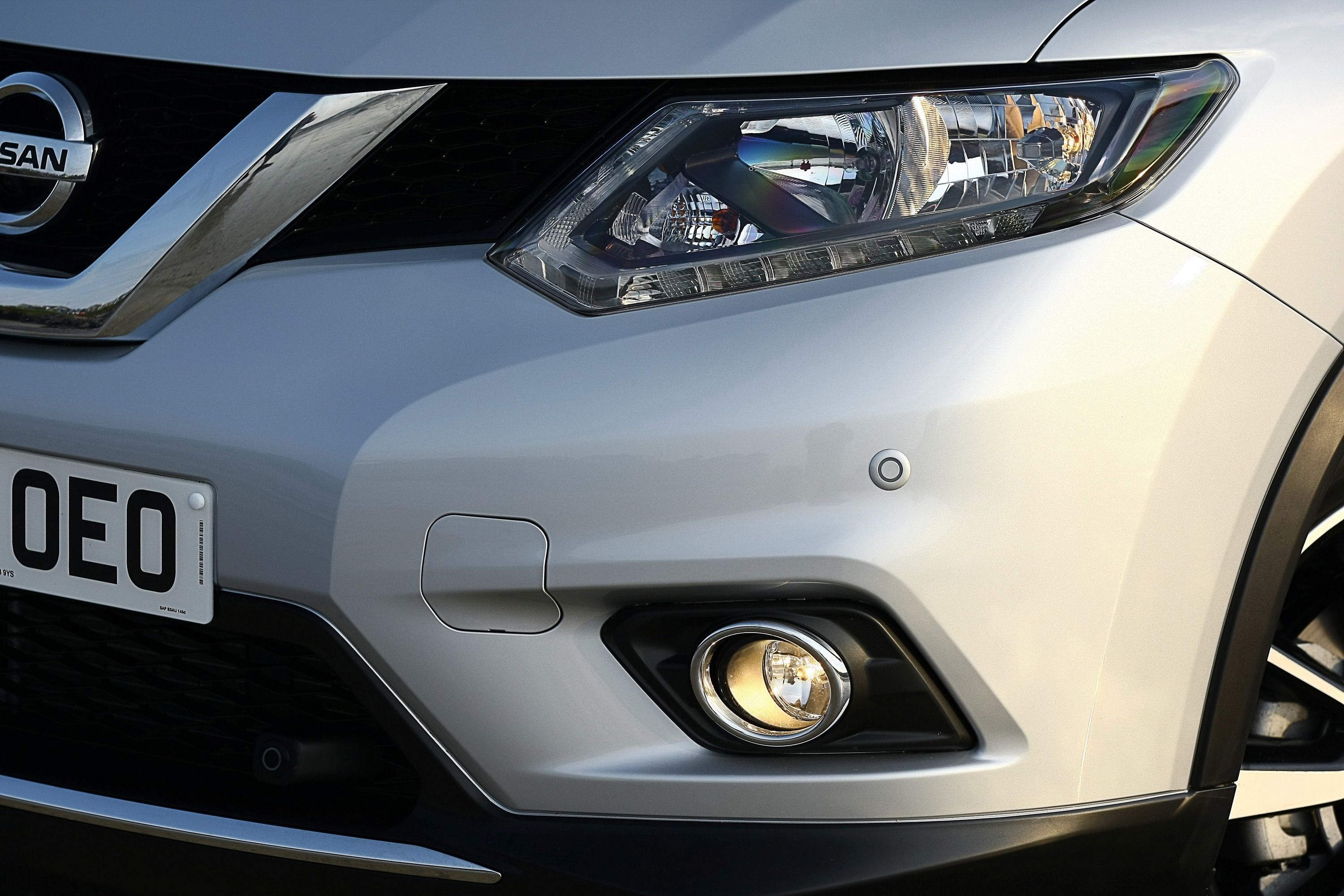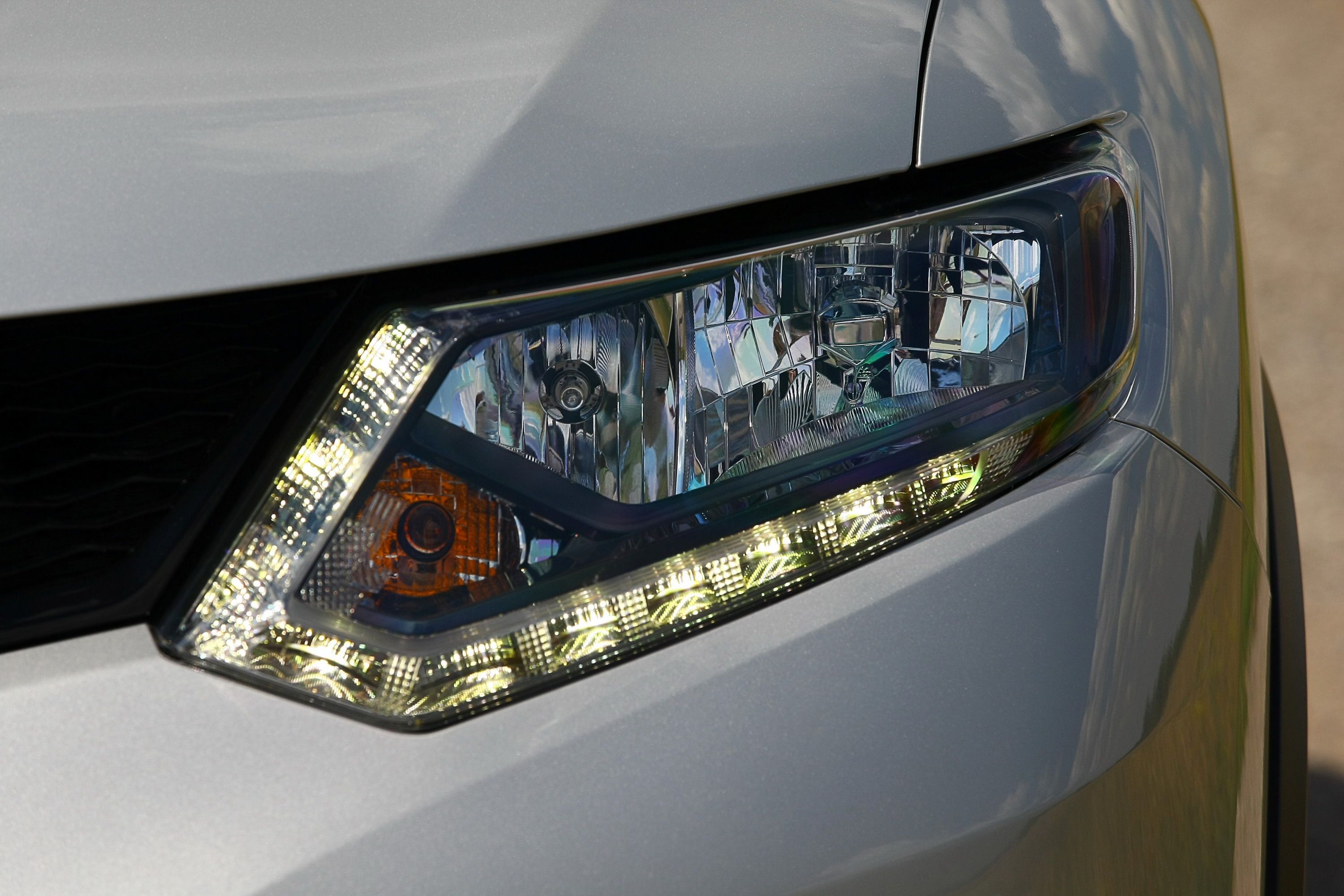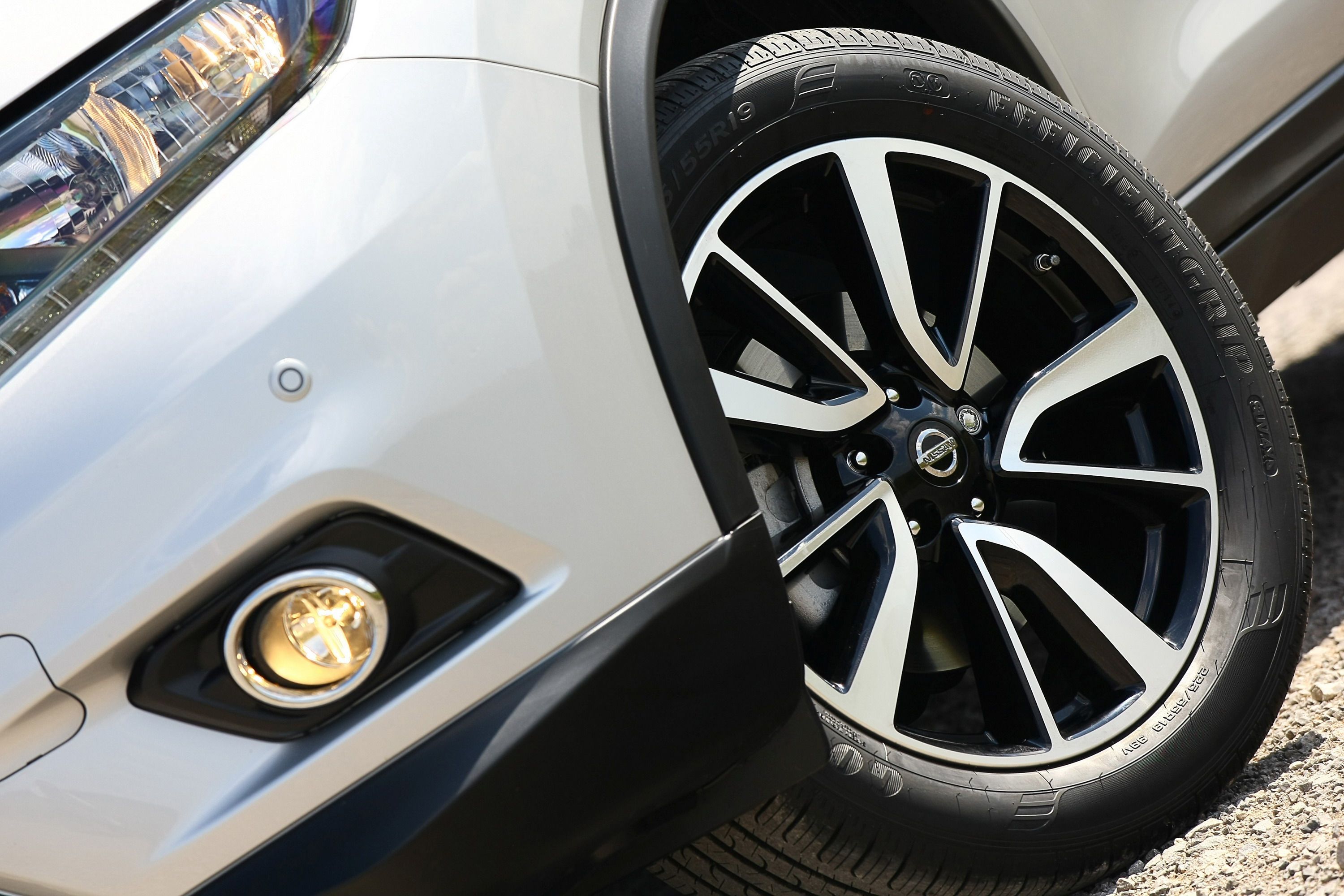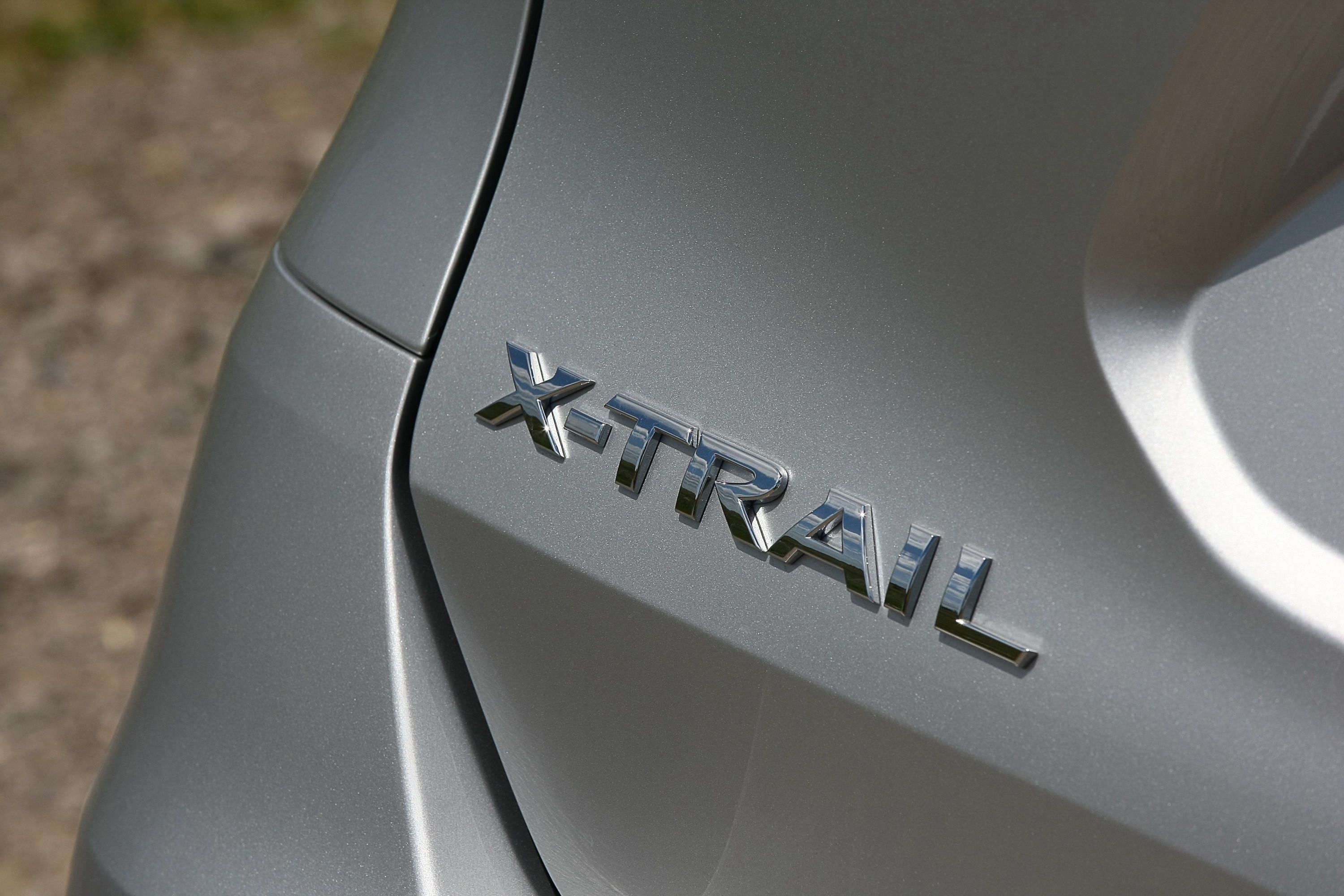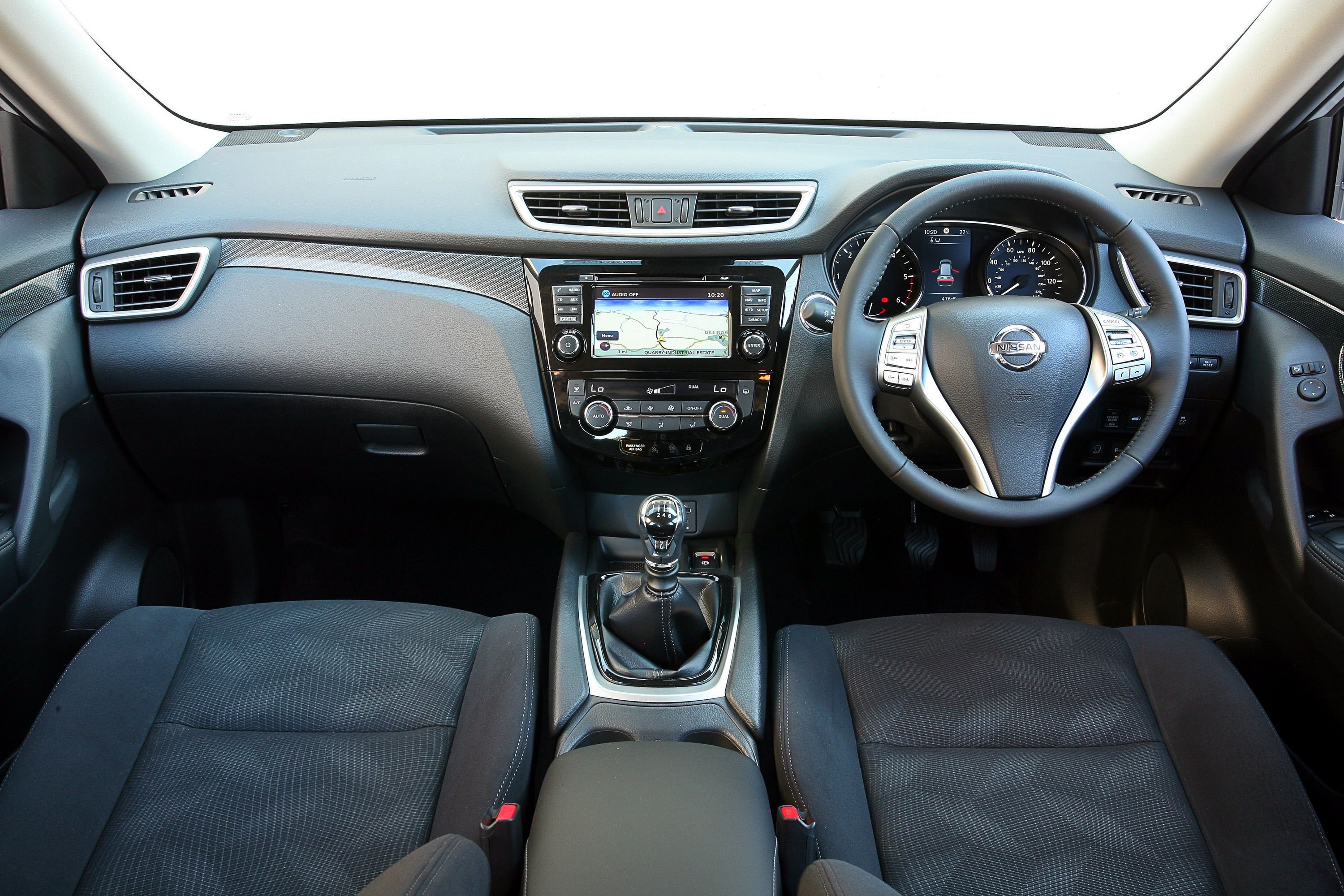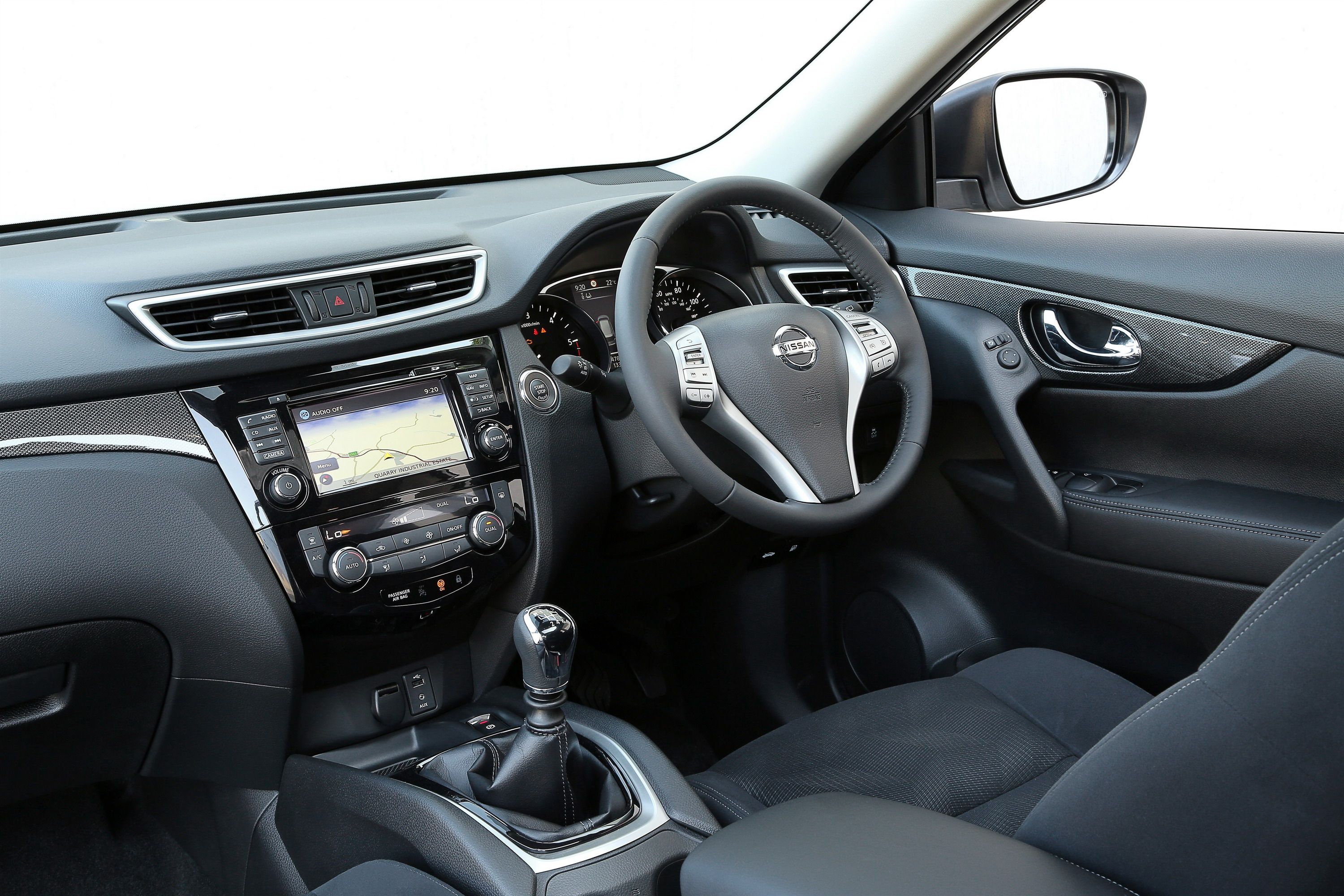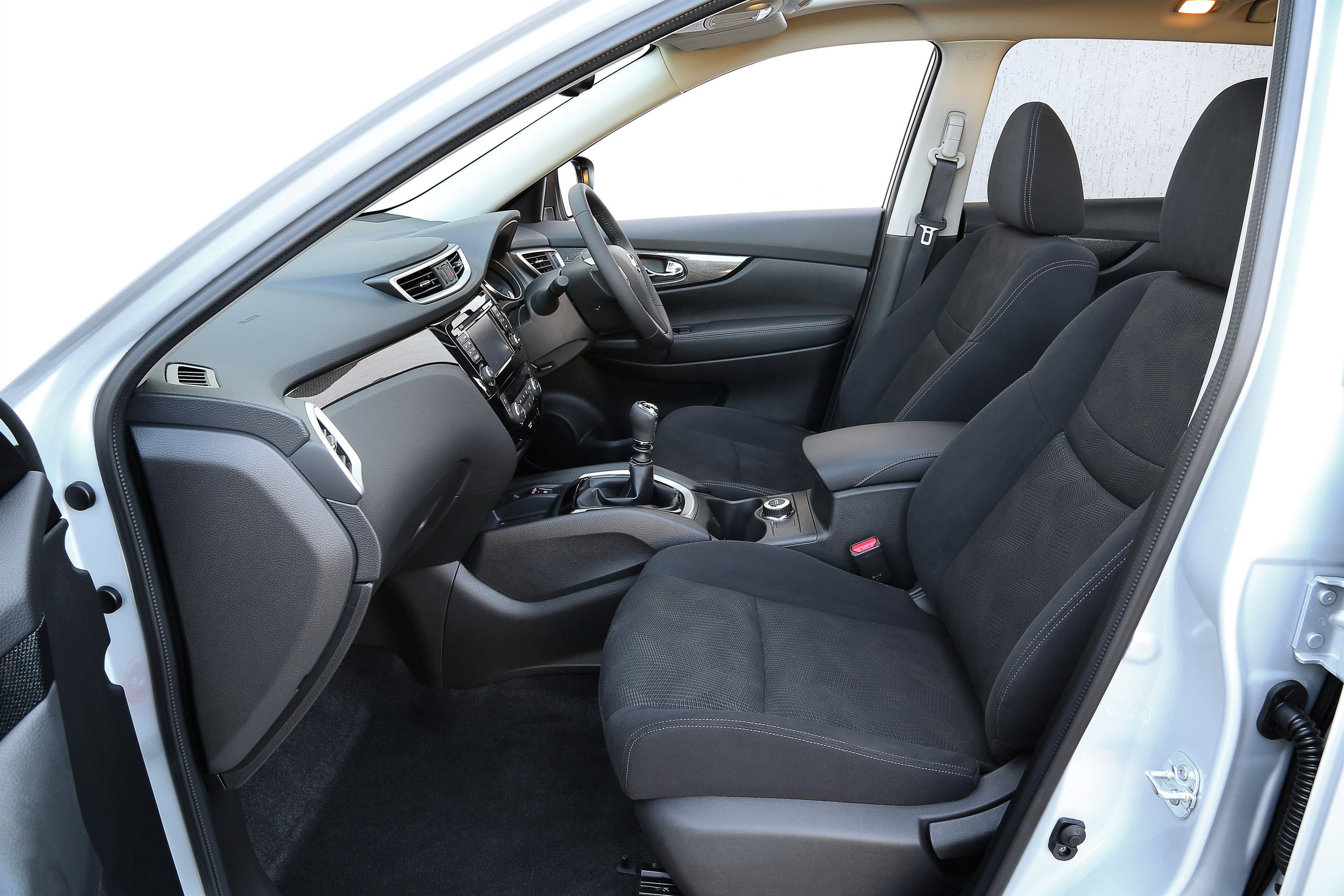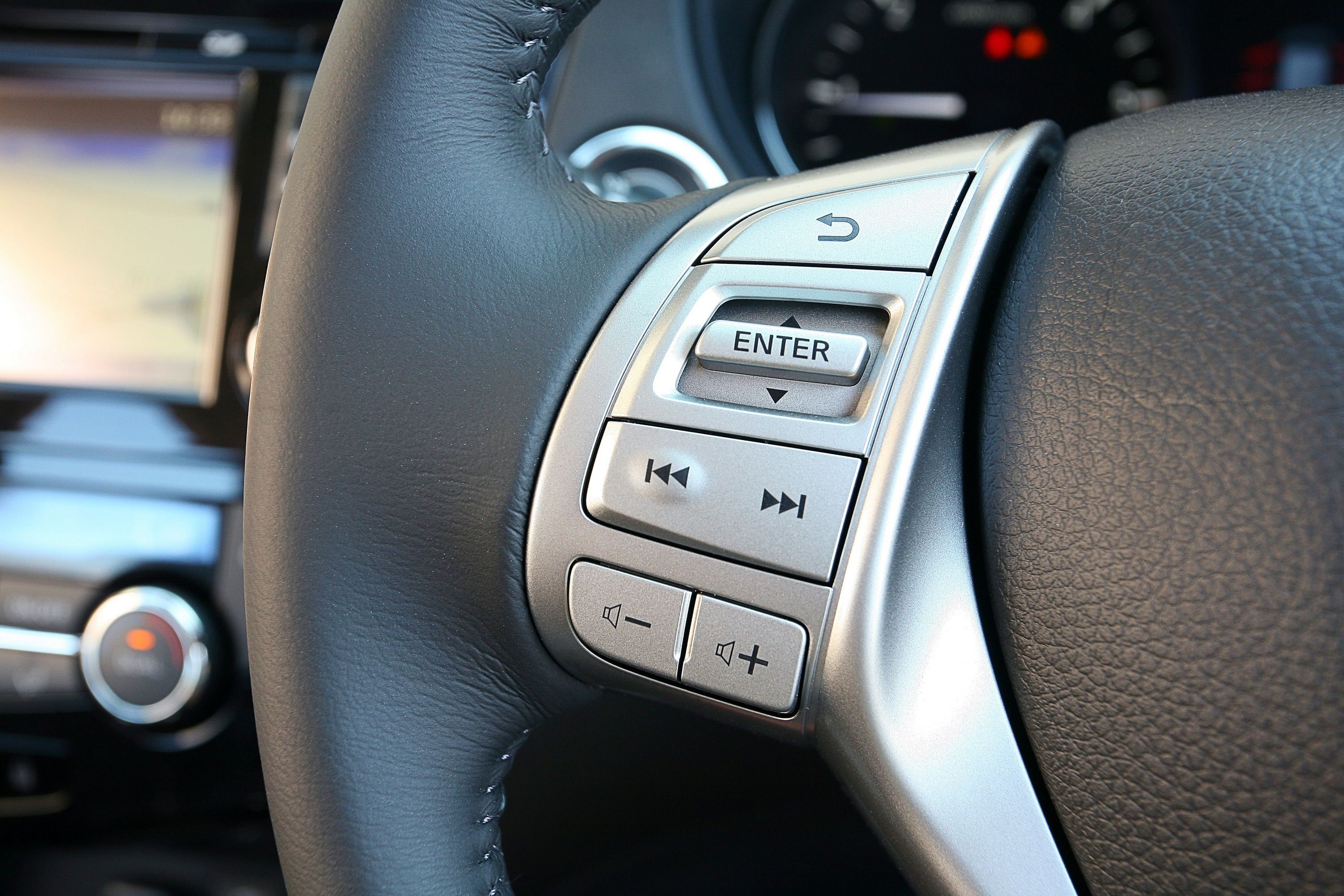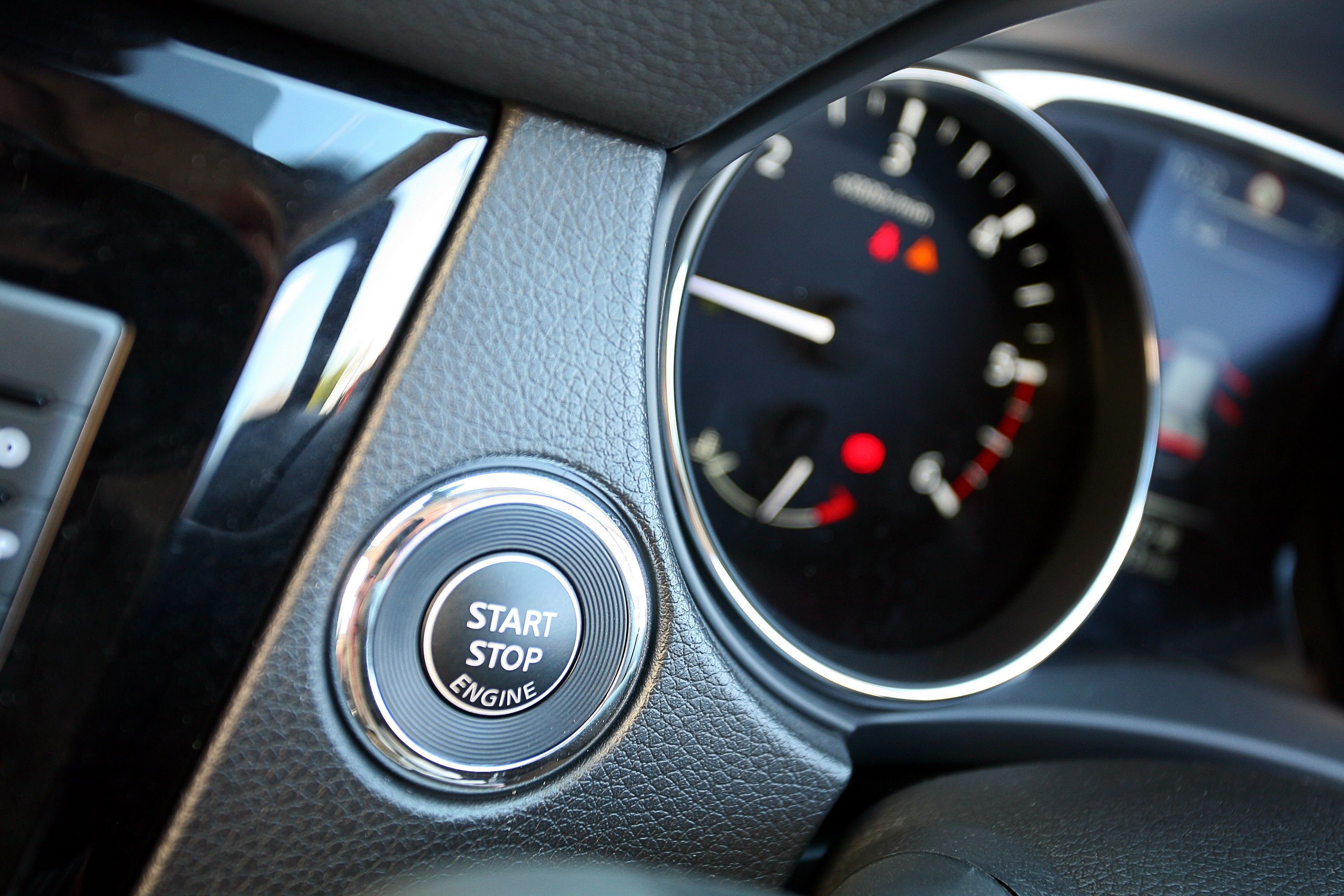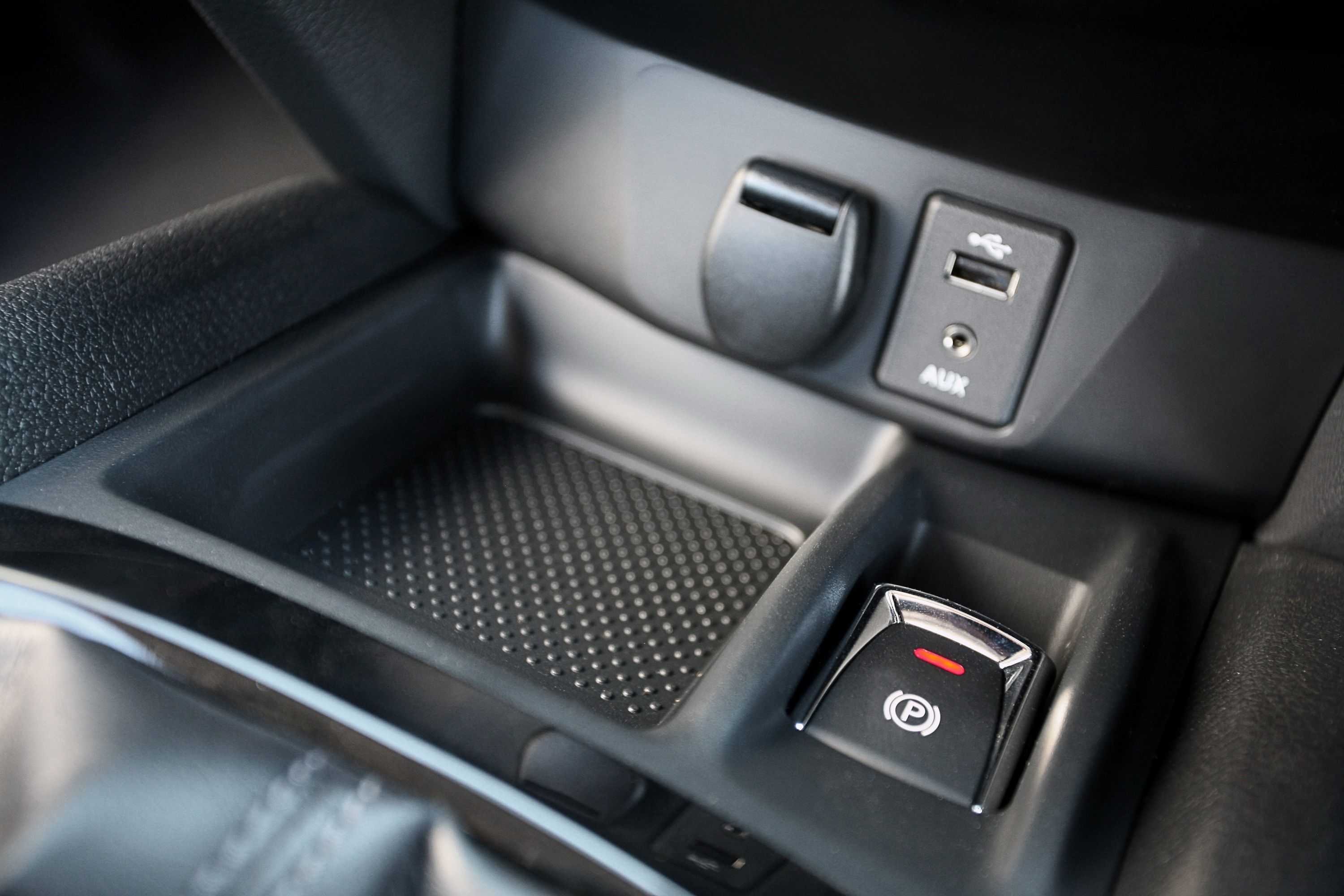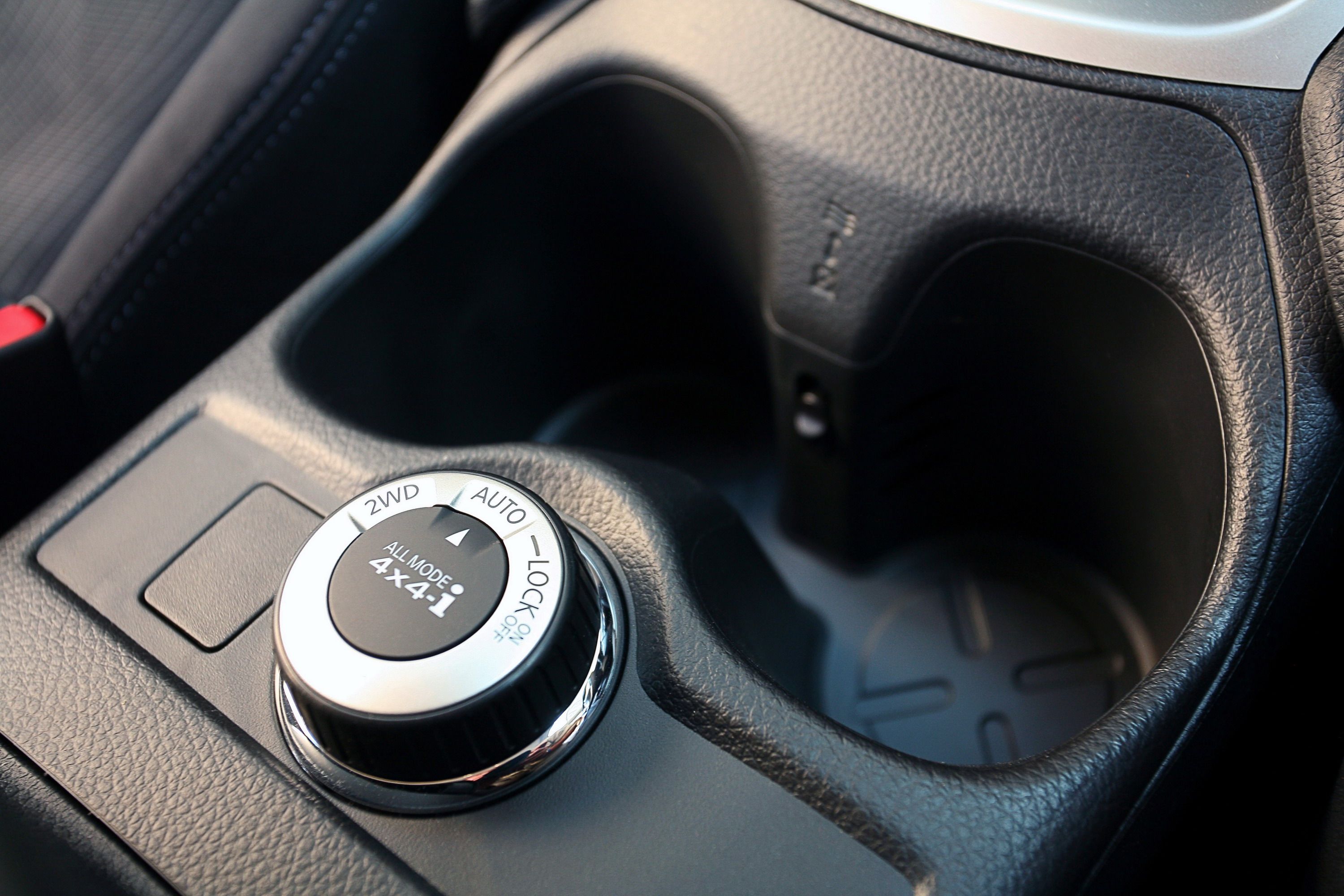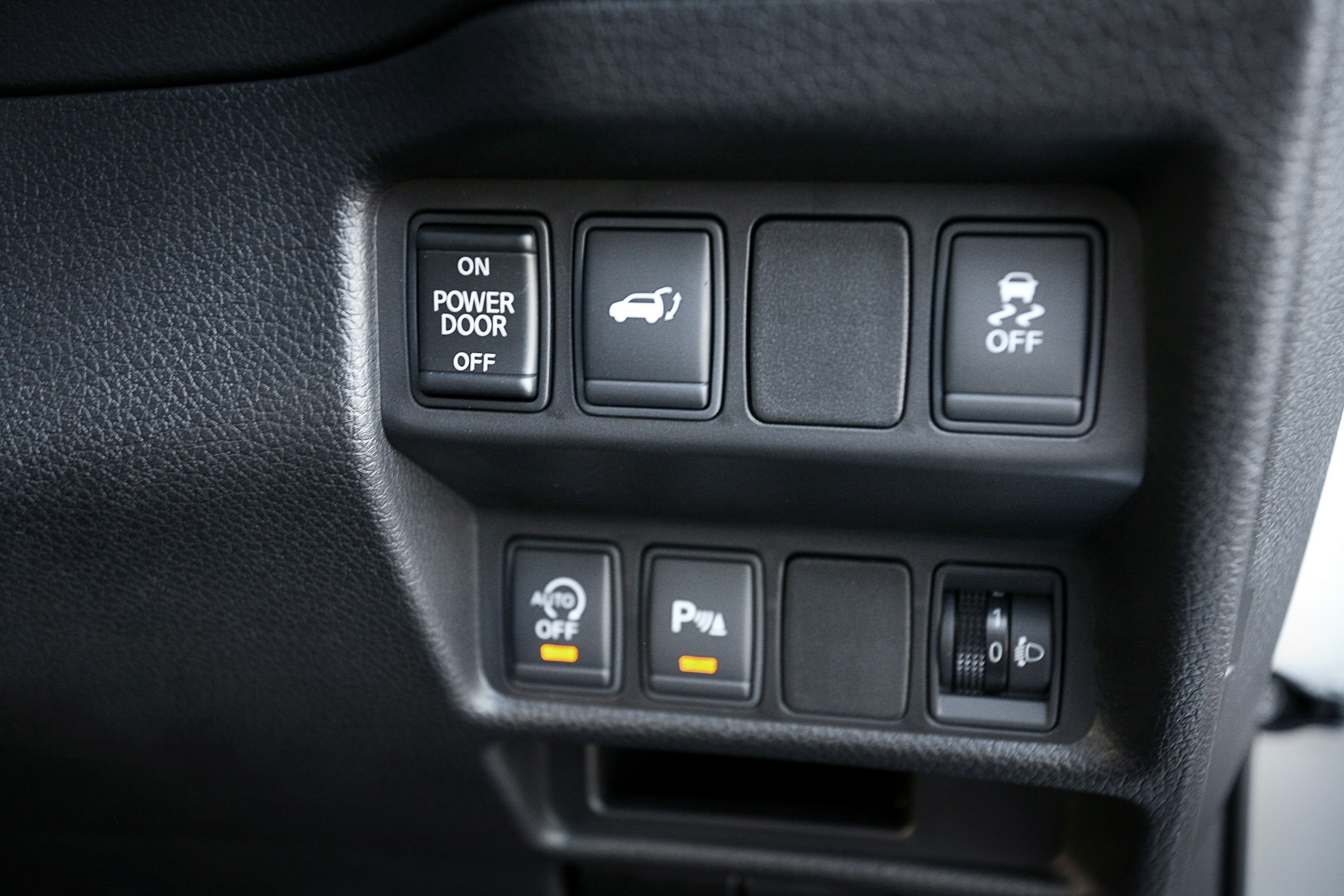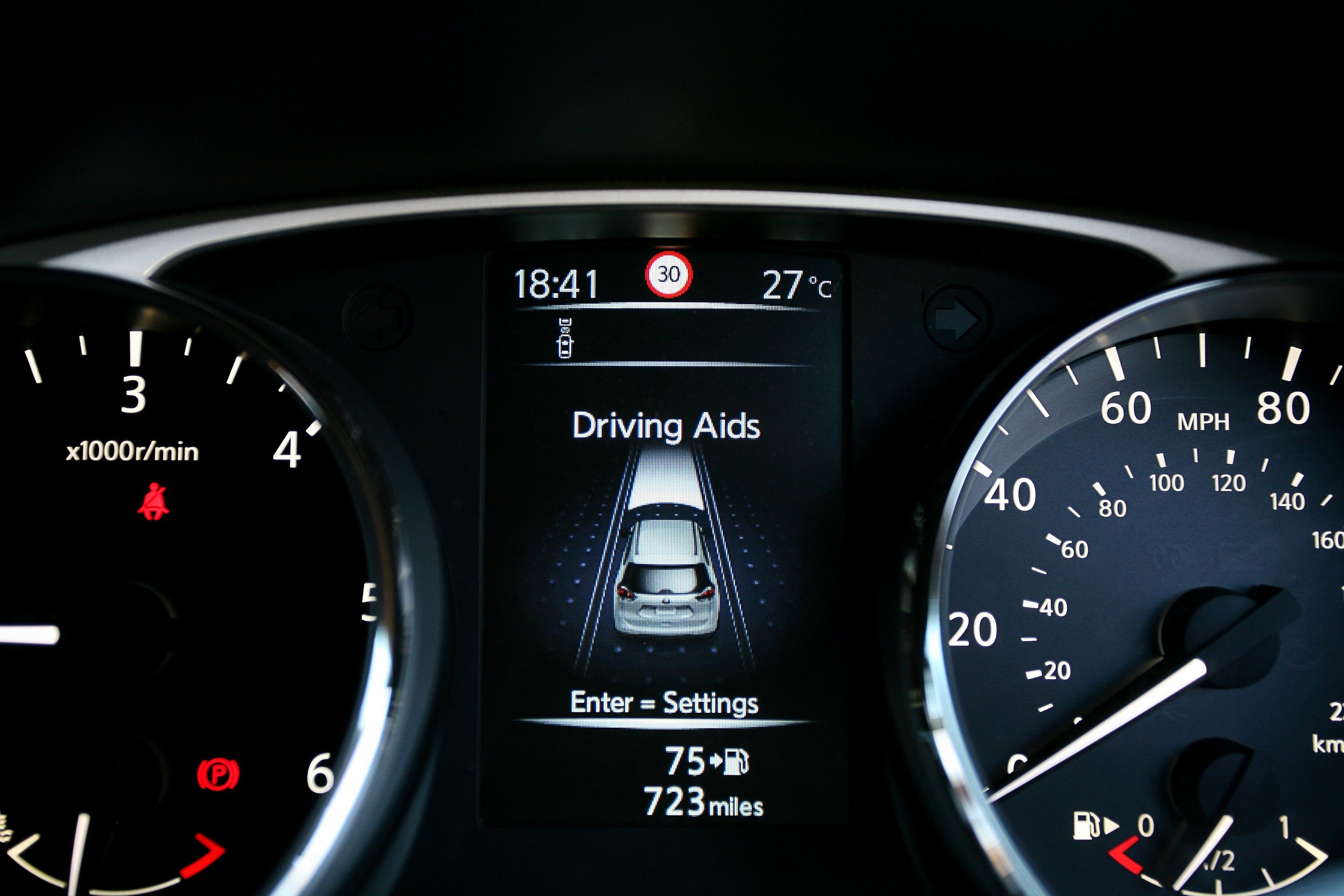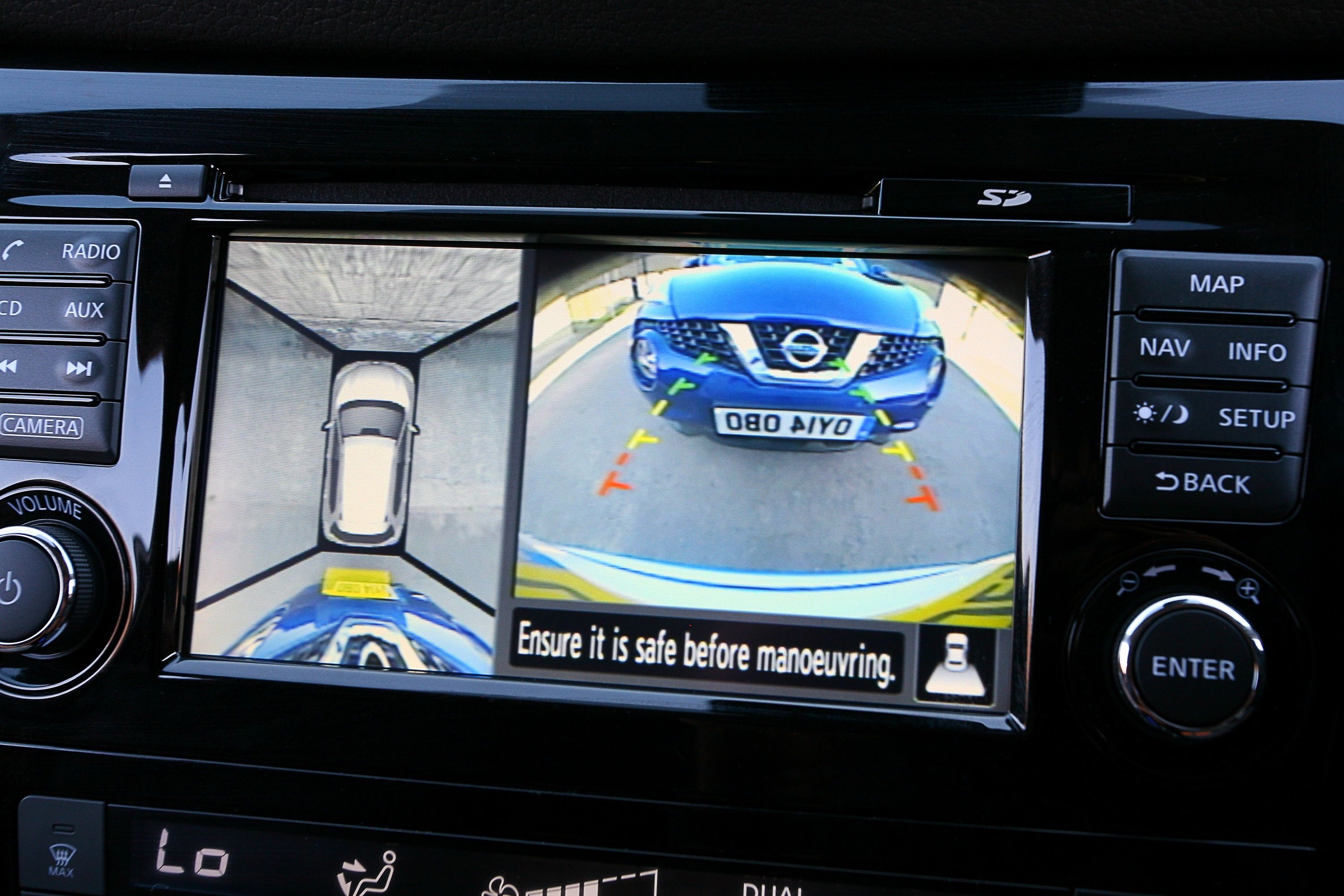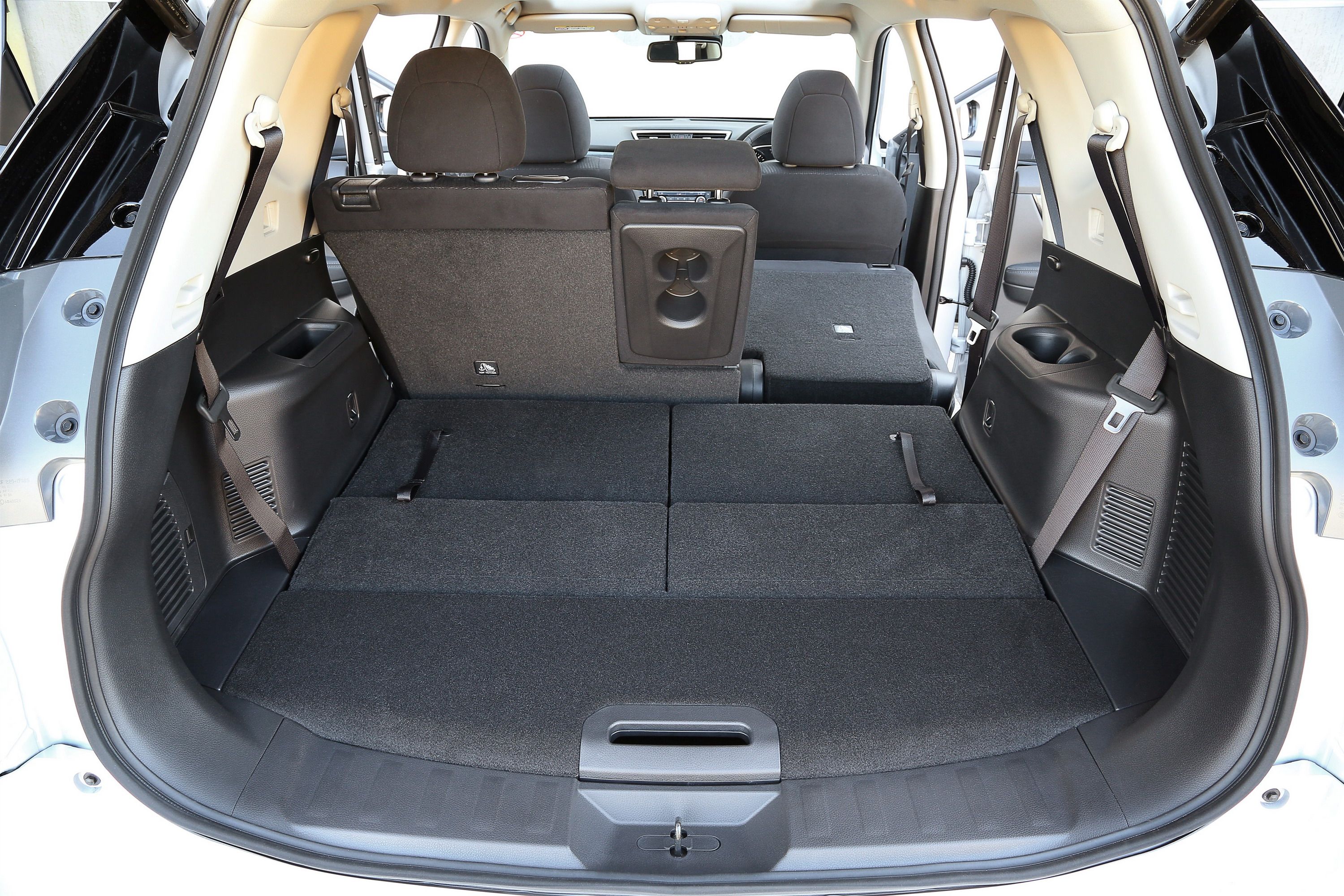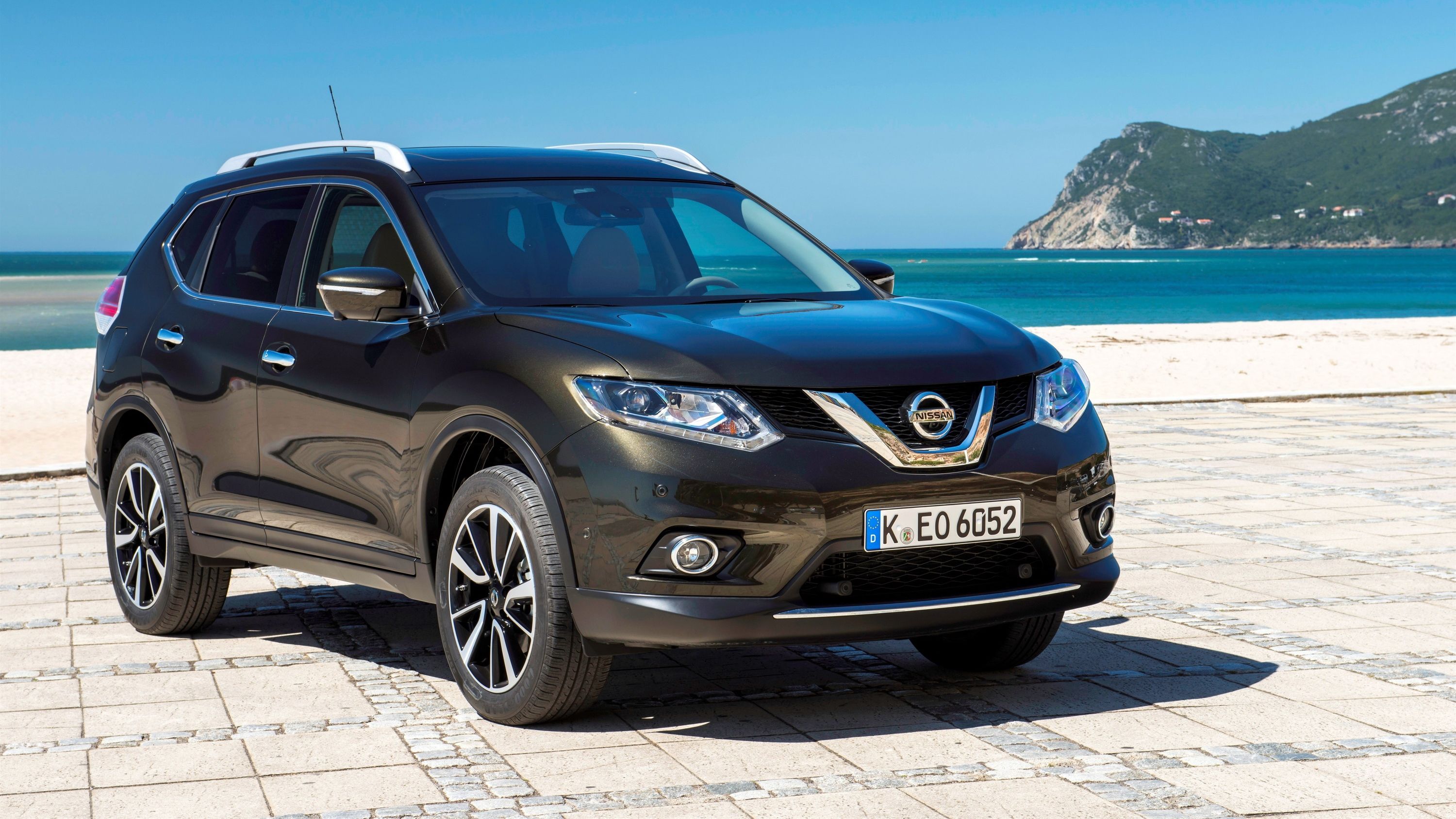There is no denying that the first- and second-generation X-Trail->ke2317 was boxy and, for lack of a better word, ugly. For 2014, Nissan->ke62 redesigned the X-Trail, ushering in a new generation and a more modern design that puts it leagues ahead of the outgoing model. On the outside, the X-Trail takes styling cues from the rest of Nissan’s crossover->ke288 and SUV->ke145 lineup, featuring the V-Motion grille, a heavily revised front fascia, new exterior lighting modules, and a sleek side profile. It should also be noted that the new X-Trail also drops that boxy, 80s-looking rear end for a more modern look that should appeal to the masses. Inside, The X-Trail benefits from more space, better ergonomics, the latest iteration of Nissan’s NissanConnect system with a seven-inch display and smartphone connectivity. The downfall of the new X-Trail is the underpowered boredom box under the hood. The 1.6-liter diesel engine delivers a laughable 128 horsepower and 236 pound-feet of torque, which means its looks better be good enough if it stands a chance against models like the BMW X3->ke255 and the Honda CR-V->ke1595.
According to Nissan, the new X-Trail “combines Nissan’s 4x4 heritage with fresh ideas and technologies inspired by its ground-breaking crossover models.” Even with an available all-wheel drive system, the X-Trails ability to conquer anything in the dirt is more than questionable. With 128 horsepower, you might have a better chance off-roading in a Honda Civic->ke236. Be that as it may, the new X-Trail is still a huge departure from the outgoing model, and it does have the modern look going for it. So, with that said, take a look at our full review below and make your own opinion about the new Nissan X-Trail.
Continue reading to learn more about the 2015 Nissan X-Trail.
nissan-x-trail
- Make: Array
- Model: nissan-x-trail
2015 Nissan X-Trail
- Make: Array
- Model: 2015 Nissan X-Trail
- Engine/Motor: inline-4
- Horsepower: 128 @ 4000
- Torque: 236 @ 1750
- Transmission: 6-speed manual
Exterior
For its third-generation refresh, the X-Trail received a slew of styling updates that visually put it leagues beyond the outgoing model. The aesthetics are far less dowdy, and go hand-in-hand with the restyled Qashqai in terms of adding muscle, sharpness and a hint of aggression.
Also like the Qashqai, the X-Trail is built on the Common Module Family (CMF) platform, a joint venture between Nissan and Renault->ke72, to reduce development costs and improve manufacturing efficiency, both of which translate into lower prices for the consumer.
The new design language is much less SUV->ke145 and leans decidedly towards the crossover->ke288 side of things. In front, the chunky, squarish-looking fascia has been remodeled into a crisp, pointed beak. The headlights are now much more angular and come equipped with an LED signature strip, while the lines for the front bumper and upper and lower grille are smoother and stronger. The chrome elements in the upper grille are exaggerated, but overall, the look has simplified. It appears much more modern and street-wise than the lifted-up second gen.
This low-slung attitude is repeated in the profile, where the boxy roofline has been tossed in favor of swoops and streamlined smoothness. The D-pillar in particular shows this new flair, with far more angle than the upright D-pillar from the previous model. Rather than the old model’s black trim, the windows on the new X-Trail use a polished metal for the surround. The wheel arches hug the tires and body more closely, and are lined with dent-resistant plastic, an element that wraps around the bottom perimeter of the car front to back.
In the rear, the taillights are moved laterally, no longer bookending the hatch. This emphasizes the car’s width and visually flattens its height. A trailing-edge roof spoiler adds flamboyance.
Dimensionally, the new X-trail is 0.67 inch longer than the outgoing model, which adds to the wheelbase for more interior space. Width has also increased by 1.18 inches, while height has decreased by 0.2 inch. Ground clearance remains the same: 8.27 inches.
While larger, the third-gen X-Trail sheds some pounds thanks to new ultra-high-strength steel that now accounts for 49 percent of the body’s construction. You’ll also find plastic used in the tailgate, saving roughly 15 pounds, while the front and rear bumper assemblies have been thinned. These changes netted nearly 200 pounds in weight savings.
Aerodynamically, the new body has more surface area than the previous model, but features like the redesigned door mirrors and underfloor spoiler covering the exhaust and rear panel help make the X-Trail much more efficient. The new aero and lower curb weight combine to make the most of the downsized engine.
LED daytime running lights are standard on higher-trim levels, complementing the Bi-LED headlights. Nissan says the new lighting source provides “whiter, clearer light than Xenon bulbs” while using half the power.
Exterior Dimensions
|
Overall length |
4,643 MM (182.79 Inches) |
|
Overall width |
1,820 MM (71.65 Inches) |
|
Overall height |
1,695 MM (66.73 Inches) |
|
Wheelbase |
2,706 MM (106.53 Inches) |
Interior
Inside the X-Trail, there’s more space, better ergonomics, and several new features. Starting in the front, the main dash features a split-level design that houses the infotainment system and climate controls. An Advanced Drive-Assist Display is placed in a 5-inch color touchscreen located between the two main dials. This display is used for a variety of purposes, including providing the driver with vehicle information and updates from the X-Trails various safety systems.
The central console contains the latest iteration of the NissanConnect system, using a 7-inch HD touchscreen to help increase connectivity with smartphones and other mobile devices.
Trim and materials include chrome, piano black and leather with contrasting stitching. The door armrest pads and center-console pad are thicker for improved comfort. There’s also a large storage box between the seats big enough to store an iPad or 10-inch tablet.
Ambient lighting and ventilation are improved by an electrically operated glass panoramic roof, a feature Nissan claims is the biggest available in its class.
Each seat in the X-Trail’s three rows has been arranged in a “theater-style layout,” which means the mounting points for the second and third rows are higher than those in front, providing good space and visibility for all the passengers onboard. The second row offers slide and recline functions that allow for easier rearrangement when fitting large items into the back. The optional third-row seats fold flat for storage. Nissan claims that second-row passengers get “best-in-sector” legroom, largely in part to the extended wheelbase and the design of the backs of the front seats.
The front seats were designed with inspiration from NASA to provide reduced fatigue on longer drives. This is done through improved spinal support for optimal blood flow through the body.
The double load floor can be arranged in up to nine configurations for more versatile storage solutions, with the cargo area organized into upper and lower areas quickly and simply. In the top position, the board can support up to 22 pounds of luggage, while that figure is bumped up to 165 pounds in the middle position. The split cargo design creates a multi-tiered approach that can accommodate a wide range of items. Access in back is also improved with a remotely operated power tailgate.
The latest generation of the NissanConnect infotainment system offers smartphone connectivity with a range of app support for music, social networking, entertainment and travel. There’s also satellite navigation that integrates features by Google->ke4770 for info on weather forecasts, gas station locations, hotels, restaurants and other points of interest. A Send-to-Car function helps drivers plan a trip in their home before sending it to the nav system. Also included are Bluetooth audio streaming, auxiliary inputs and USB slots. The system can send turn-by-turn navigation instructions, audio content, traffic-sign recognition info and similar data to the 5-inch TFT color display presented to the driver.
Nissan’s Around View Monitor helps drivers more easily maneuver the X-Trail’s increased size into the appropriate parking spot, using a bird’s eye view to guide them. For parallel parking, Nissan’s Intelligent Park Assist can assess the size of the spot, then steer while the driver controls forward and reverse.
Nissan also offers something it calls Safety Shield, which is an assortment of features in line with the automaker’s commitment “to produce commercially viable autonomous vehicles by 2020.” These automated functions include Forward Emergency Braking, which utilizes radar systems to detect a rapidly closing distance to the car in front, emitting an audible warning to the driver. If he fails to act on this warning the brakes are applied.
There’s also Driver Attention Alert, which learns your unique driving style, then monitors inputs for erratic behavior, warning the driver to take a break when needed. Traffic Sign Recognition can detect speed limit signs using a front-facing camera, even adjusting its suggested velocities for both wet and dry weather conditions.
Lane Departure Warning does exactly what you’d expect, warning the driver when moving outside road markings without using the turn signals. The Around View Monitor informs the Blind Spot Warning system, illuminating a light in the door mirror when a vehicle is detected. If the driver signals a lane change while a vehicle is in the blind spot, the light flashes and an audible warning is sounded.
The Around View Monitor also combines with the front and rear parking sensors for the Moving Object Detection system. When stationary, if something moves in front of one of the four outward facing cameras, the system will chime a warning and highlight the area where the movement was detected. This is assisted with a rear wide-view AVM camera that has a field of vision in excess of 180 degrees. Images are then displayed on the 7-inch screen in the cabin.
Finally, there’s High Beam Assist, which detects oncoming traffic to quickly switch between headlight low and high beams.
Drivetrain
While Nissan says it’ll add a turbocharged 1.6-liter DIG-T gasoline unit with 161 horsepower to the line sometime later this year, the new X-Trail comes with only a single engine option at launch for European customers – a turbocharged 1.6-liter dCi with 128 horsepower and 236 pound-feet of torque. It’s part of Nissan’s move towards smaller, turbocharged engines with higher efficiency and lower emissions, a strategy also seen in the wide range of engines on the new Qashqai. Outside of Europe, there’s also a 2.0-liter gas option with 143 horsepower and a 2.5-liter gas option with 170 horsepower.
The European 1.6-liter diesel unit produces the same torque figures as the 2.0-liter dCi unit it replaces, but does so with less fuel and less CO2 from the tailpipe. Performance looks like a run from 0-to-60 mph in 10.5 seconds, with a top speed of 117 mph. All of the engine’s torque is available at just 1,750 rpm, giving the small SUV sufficient grunt anywhere in the rev range.
Like the car’s chassis, the engine is part of Nissan’s joint venture with Renault and uses a variety of technologies to help maximize cleanliness and fuel economy. These include a cold-loop, low-pressure exhaust-gas recirculation system that “recycles exhaust gas at a lower temperature to reduce emissions of nitrogen oxides and CO2.” There’s also optimized thermal management to help the powerplant get to operating temperature more quickly, reducing friction losses from cold starts.
Layouts include both two- and all-wheel drive. With two-wheel drive and manual transmission, the 1.6-liter engine produces only 129 g/km of emissions. Automatic gearboxes bump this figure up to 135 g/km. AWD models make 139 g/km, which is an 18 percent decrease over the previous generation.
For transmissions, customers can choose either a six-speed manual or XTronic automatic. The auto box is only available on two-wheel-drive layouts. While essentially a CVT, Nissan says the XTronic auto “mimics the behaviour of traditional, multi-ratio automatic gearboxes during hard acceleration, with stepped changes. In more gentle driving, the ratios are subtly adjusted to give ultimate smoothness.”
The all-wheel-drive system is Nissan’s latest-generation ALL MODE 4x4-i, a feature the automaker hopes will maintain the X-Trail’s dubious off-road capability. This electronic AWD system is controlled by a rotary switch on the center console and offers a choice between two-wheel drive, Auto mode, or Lock for permanent power to all four corners.
In the default Auto mode, the system monitors throttle inputs, engine speed, and available torque in anticipation of wheel spin, distributing power between the front and rear axles at speeds up to 50 mph. Beyond 50 mph, power is shifted rearward to restore traction as needed. For slower, rougher terrain, the Lock mode provides good traction.
Electronic driver’s aids include Active Ride Control, which monitors the road surface for undulations that could potentially upset the chassis, altering damping settings in the process. There’s also Active Engine Brake, which uses the XTronic transmission to help slow the car when applying the binders or cornering, adding control and feel while decreasing pedal effort.
There’s also Active Trace Control, which uses onboard sensors for speed, steering angle, throttle and braking inputs to individually brake each wheel, reducing understeer. Finally, there’s Hill Start Assist, which piggybacks off the ESP system to detect when the vehicle is sitting at an incline. The system automatically applies the brakes, releasing once the throttle is opened or after two seconds, whichever comes first. The driver is alerted that the system is in use via an indicator on the dash.
Drivetrain Specifications
|
No. of cylinders, configuration |
4, in line |
|
Valves per cylinder |
4 |
|
Engine capacity |
1598 |
|
Bore x stroke |
80x79.5 mm |
|
Max. engine power |
128 HP @ 4,000 RPM |
|
Max. torque |
236 LB-FT @ 1,750 RPM |
|
Compression ratio |
15.4:1 |
|
Fuel type |
Diesel |
|
Fuel tank capacity |
60 L |
Prices
The new X-Trail will launch with four available trim levels – the Visia, Acenta, n-tec, and Tekna. Each comes standard with air-conditioning, alloy wheels, six airbags, LED daytime running lights, a 5-inch color display, Bluetooth with integrated microphone, cruise control, hill start assist, sliding and reclining rear seats, and a luggage board system.
The top-range Tekna model comes with Bi-LED headlights, leather seats, an electrically adjustable driver’s seat, front and rear parking sensors, push-button ignition, Forward Emergency Braking, Lane Departure Warning, High Beam Assist, Traffic Sign Recognition and 19-inch wheels.
Pricing starts at $35,801 for a base model with two-wheel drive and a six-speed manual transmission, while the AWD model with all the bells and whistles will run you $48,380 (estimated at current exchange rates, 4/29/15).
2015 Nissan X-Trail - UK prices
|
Engine |
Transmission |
Basic Price |
VAT |
Total Retail Price |
On The Road Price |
|
dCi130 2WD |
6 manual |
£19,283.33 |
£3,856.67 |
£23,140 |
£23,195 |
|
dCi130 2WD |
6 manual |
£20,783.33 |
£4,156.67 |
£24,940 |
£24,995 |
|
dCi130 2WD |
Xtronic transmission |
£21,800.00 |
£4,360.00 |
£26,160 |
£ 26,345 |
|
dCi130 4WD |
6 manual |
£22,091.67 |
£4,418.33 |
£26,510 |
£26,695 |
|
dCi130 2WD |
6 manual |
£22,075.00 |
£4,415.00 |
£26,490 |
£26,545 |
|
dCi 130 2WD |
Xtronic transmission |
£23,091.67 |
£4,618.33 |
£27,710 |
£27,895 |
|
dCi 130 4WD |
6 manual |
£23,383.33 |
£4,676.67 |
£28,060 |
£28,245 |
|
dCi130 2WD |
6 manual |
£22,991.67 |
£4,598.33 |
£27,590 |
£27,645 |
|
dCi130 2WD |
Xtronic transmission |
£24,008.33 |
£4,801.67 |
£28,810 |
£28,995 |
|
dCi130 4WD |
6 manual |
£24,300.00 |
£4,860.00 |
£29,160 |
£29,345 |
|
dCi130 2WD |
6 manual |
£24,658.33 |
£4,931.67 |
£29,590 |
£29,645 |
|
dCi130 2WD |
Xtronic transmission |
£ 25,675.00 |
£5,135.00 |
£30,810 |
£30,995 |
|
dCi130 4WD |
6 manual |
£25,966.67 |
£5,193.33 |
£31,160 |
£31,345 |
Competition
2015 BMW X3
The second-generation X3->ke255 was first introduced in 2010, and promises high capability and luxury. Recently added options include a two-wheel-drive platform and a diesel engine. The interior is well-appointed, with high-grade materials and a huge variety of options. Drivetrain performance is pretty good too, with a number of engine options for either performance or economy. Prepare to pay for it though, as pricing starts at $38,500 and rises exponentially with higher trim levels.
Read our full review here.
2015 Honda CR-V
The CR-V->ke1595 has been around for quite some time, first dropping cover in 1995 and currently existing as one of Honda’s->ke34 best-selling vehicles. Today, it’s in its fourth generation and is sold all over the globe, a testament to its popularity. Engine options include either a 2.0-liter or 2.4-liter inline-four cylinder gas unit, while Europe gets to enjoy a 1.6-liter i-DTEC powerplant. The Europeans also get a nine-speed automatic gearbox option, while the rest of us make do with a five-speed auto or six-speed manual. Pricing starts at $23,320, but additional packages and equipment can boost that figure to at least $30,000.
Read our full review here.
Volkswagen Tiguan
VW->ke94 is known for imbuing each of its models with a feeling of class and distinction, and that’s still the case with the Tiguan.->ke1817 The interior is quiet, the drivetrain is refined and the ride is smooth, but you’ll be paying a bit extra for all that. However, there are a variety of trim levels to choose from, whether you’re looking for technology, practicality or sportiness. Standard features include electrically adjustable seats, a leather-wrapped steering wheel, Bluetooth connectivity, and auxiliary media input. Prices start at $26,255, but like the Honda, that number quickly rises with extras.
Read our full review here.
Conclusion
The new X-Trail promises to be a lot of things to a lot of people. It’s got a lot of room for stuff, with a flexible cargo space ready to be customized to meet your needs. It looks much better than its predecessor, with smoother lines and simpler design. And even though it’s slightly bigger than before, all that tech in the interior should make it pretty painless to drive.
There are a few problems, though. The third-row seating, for example, is a cost option, bumping up a price that’s already a bit steeper than it should be. If you live in Europe, engine options are limited to the one diesel powerplant, which is a fine unit but not necessarily what everyone might be looking for. Finally, I have a hard time coming to grips with Nissan’s claim that this machine is capable off-road. A slippery incline or shopping mall island divider? Sure, no problem. Actual dirt trails with rocks and things to crawl over? Maybe not.
Either way, the new X-Trail should meet the expectations of most out there looking for a comfortable mid-size->ke1695 crossover. It’s a solid refresh, and points the right direction when it comes to current market demands.


